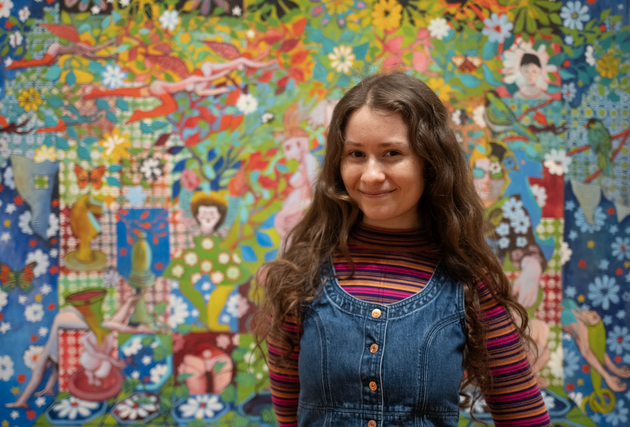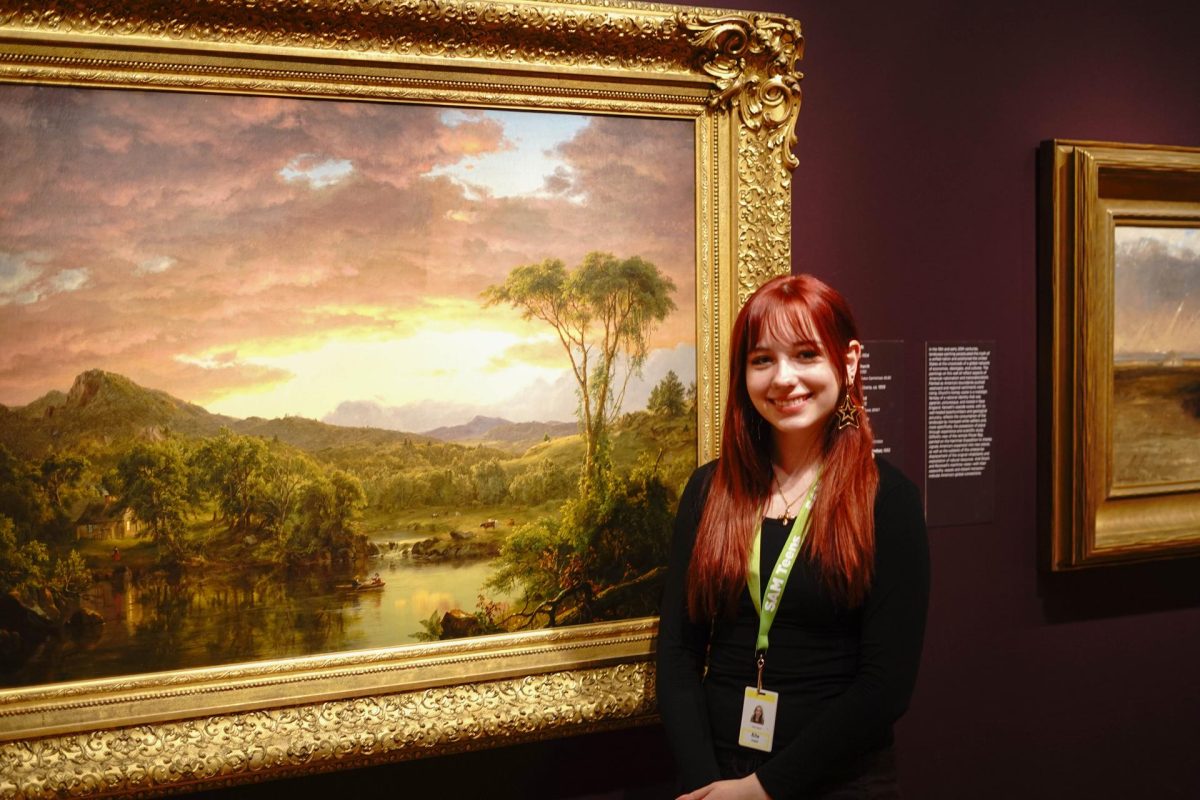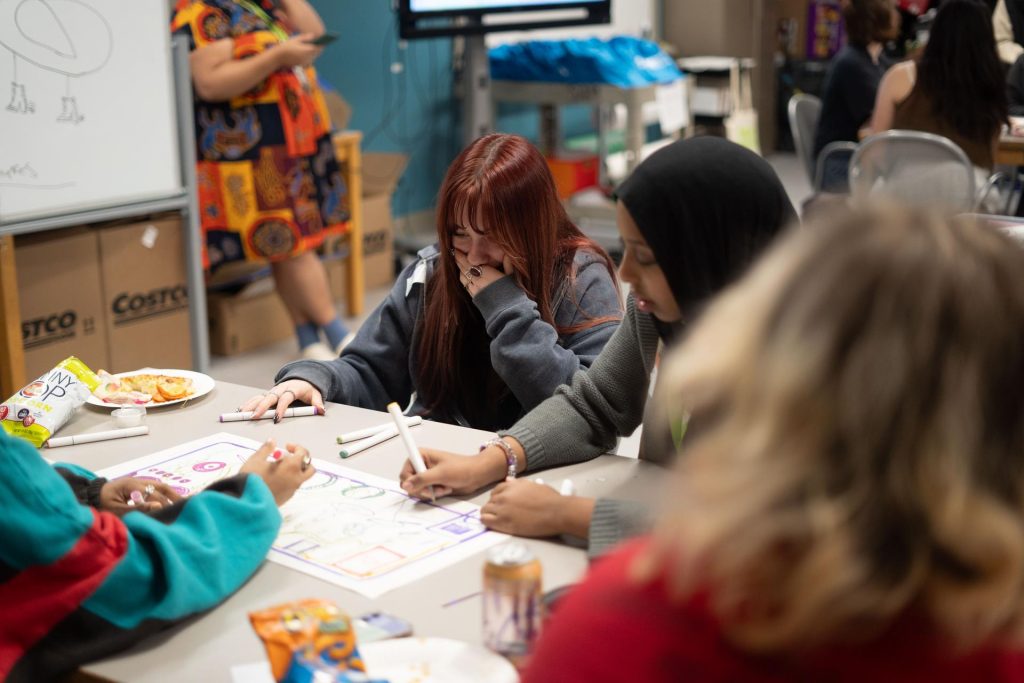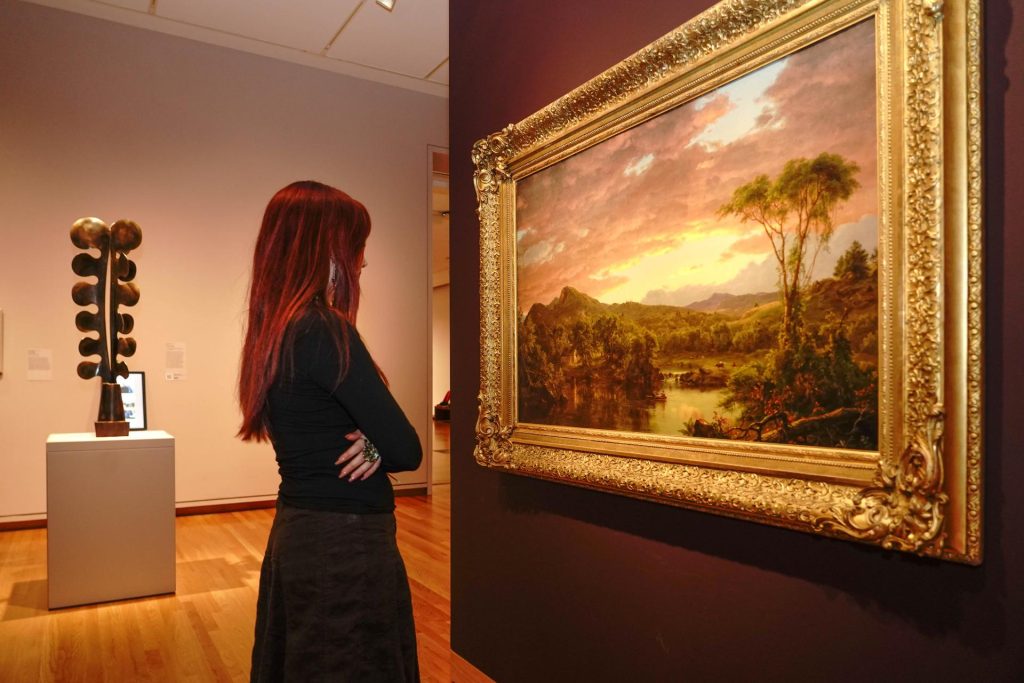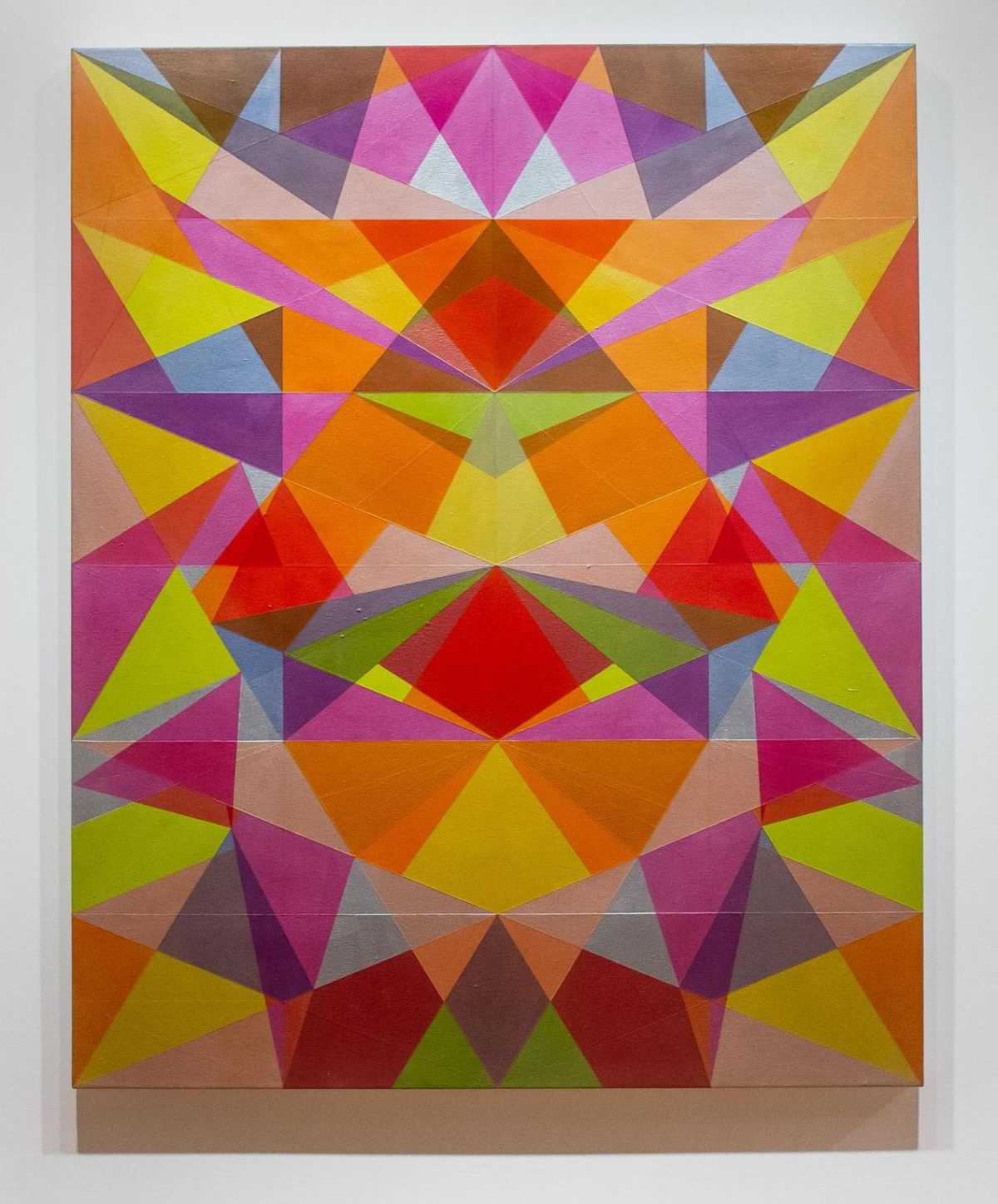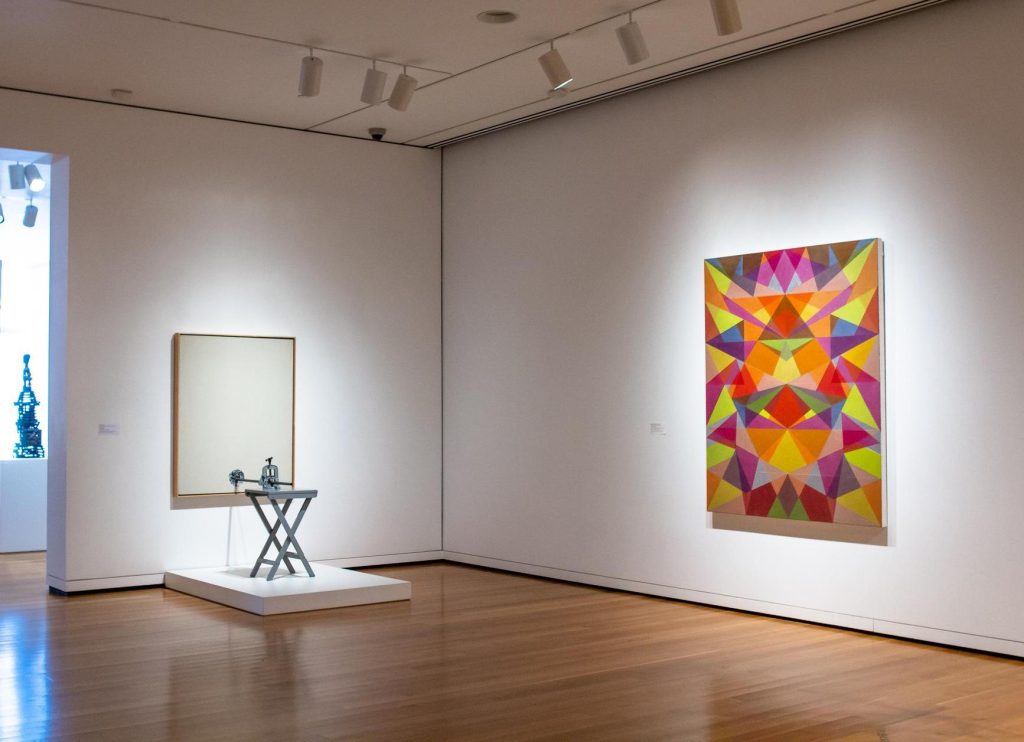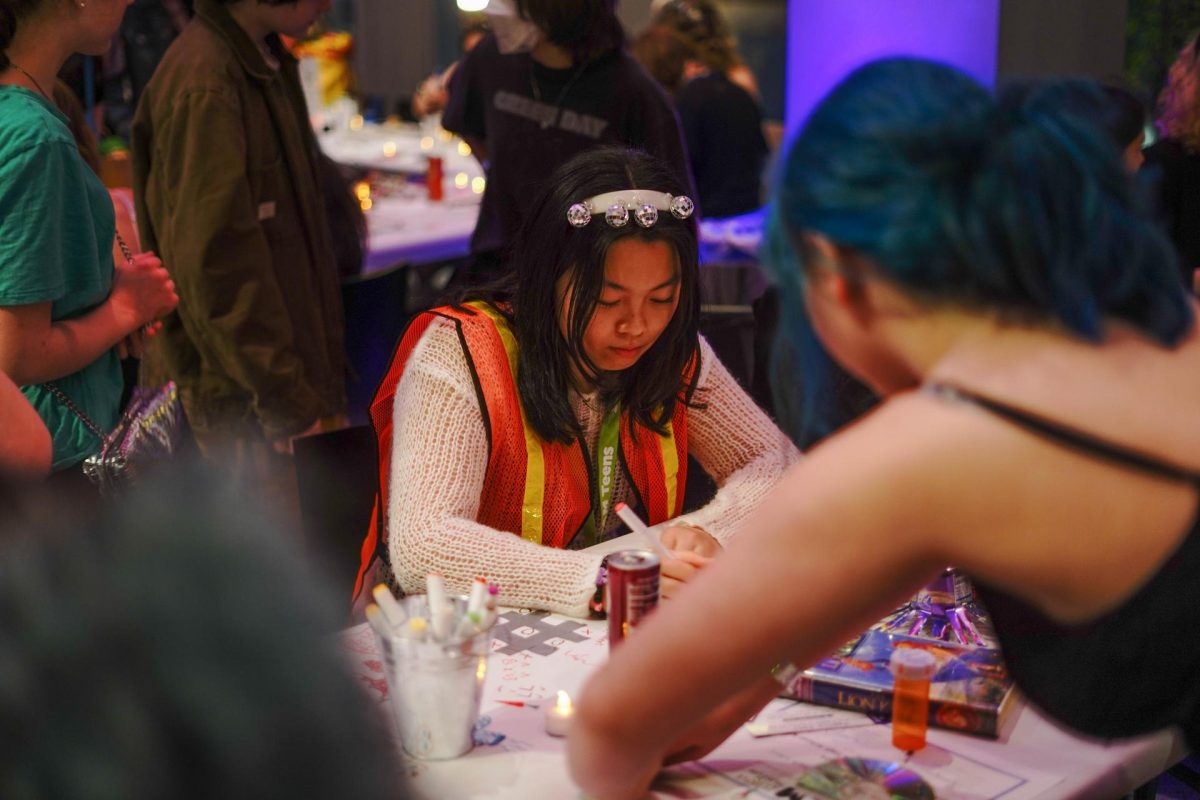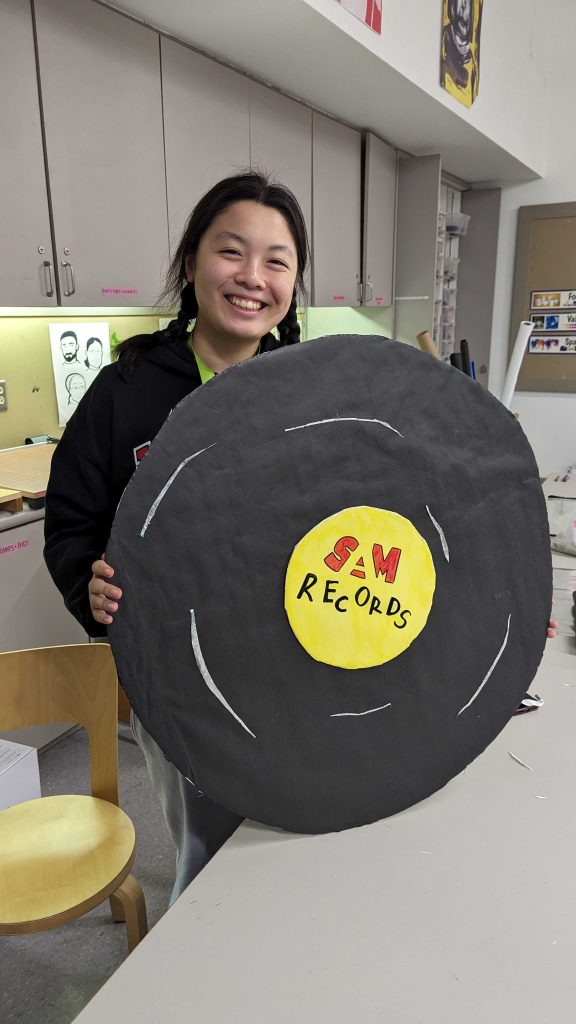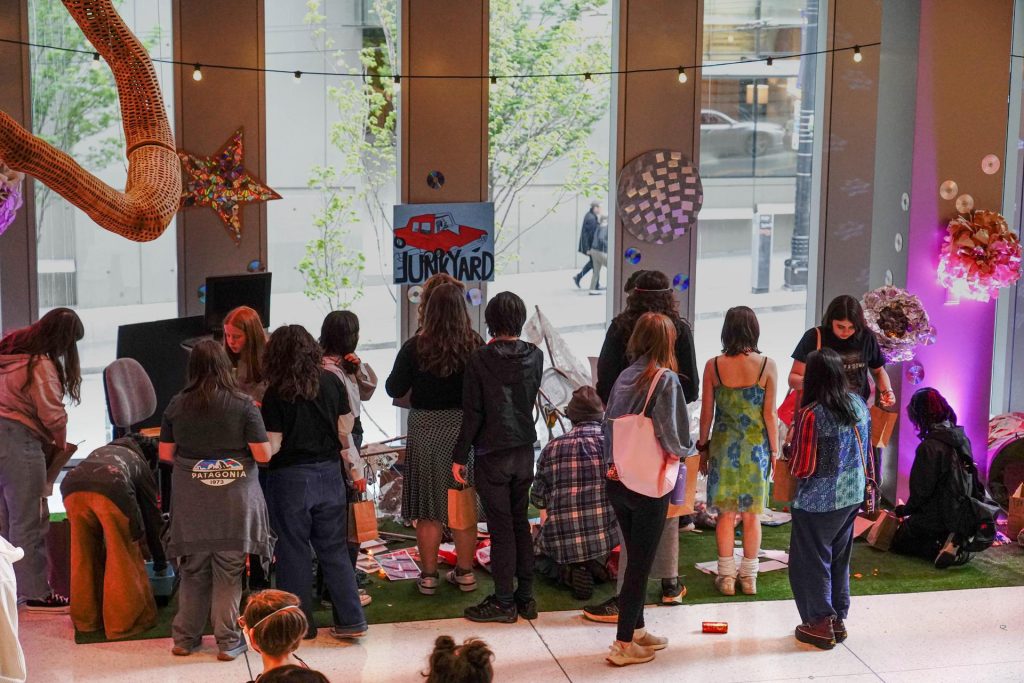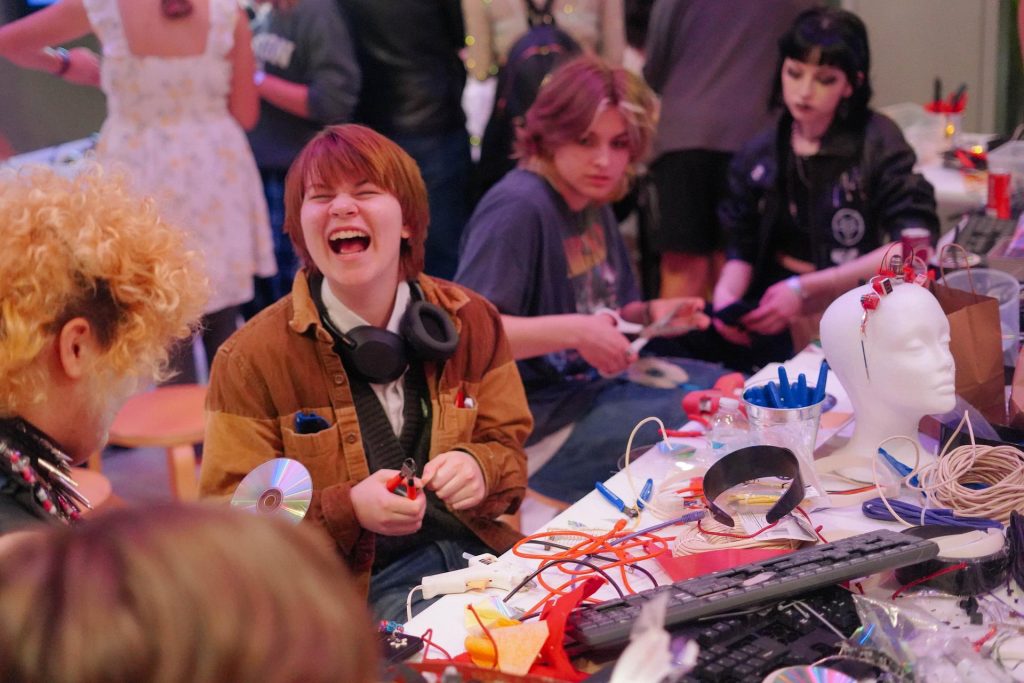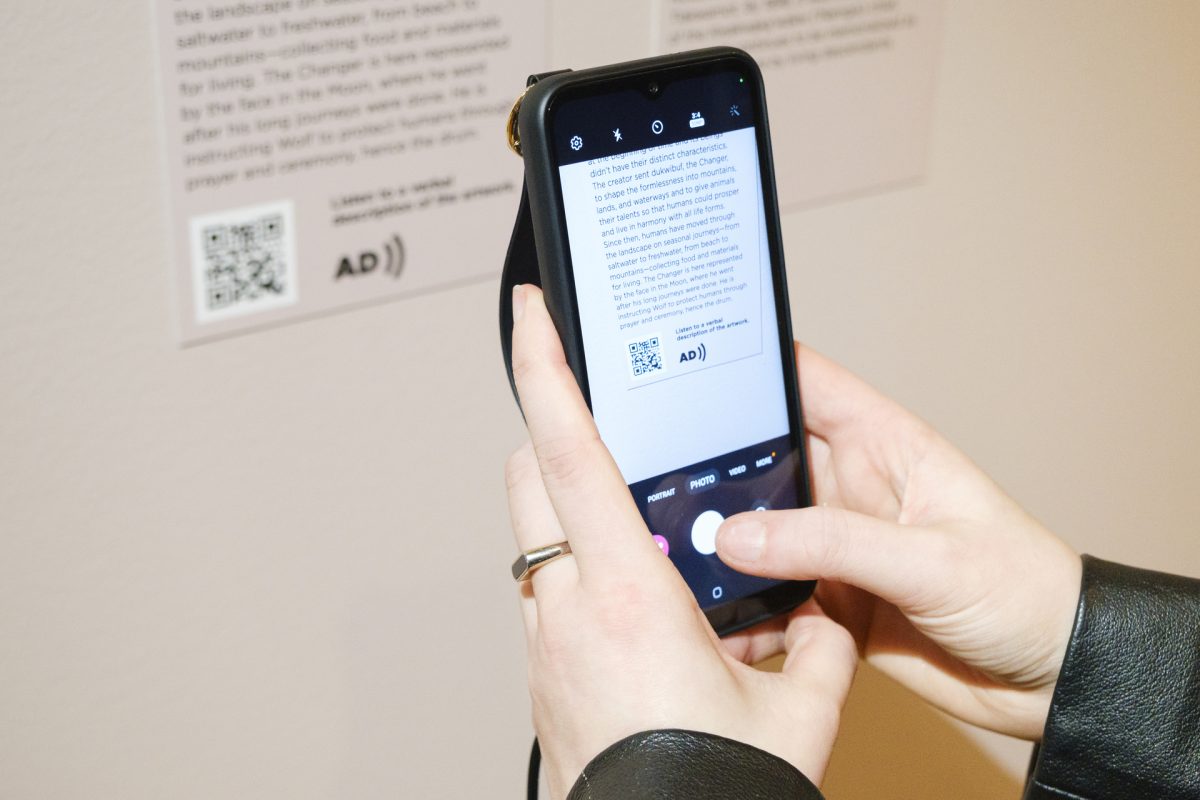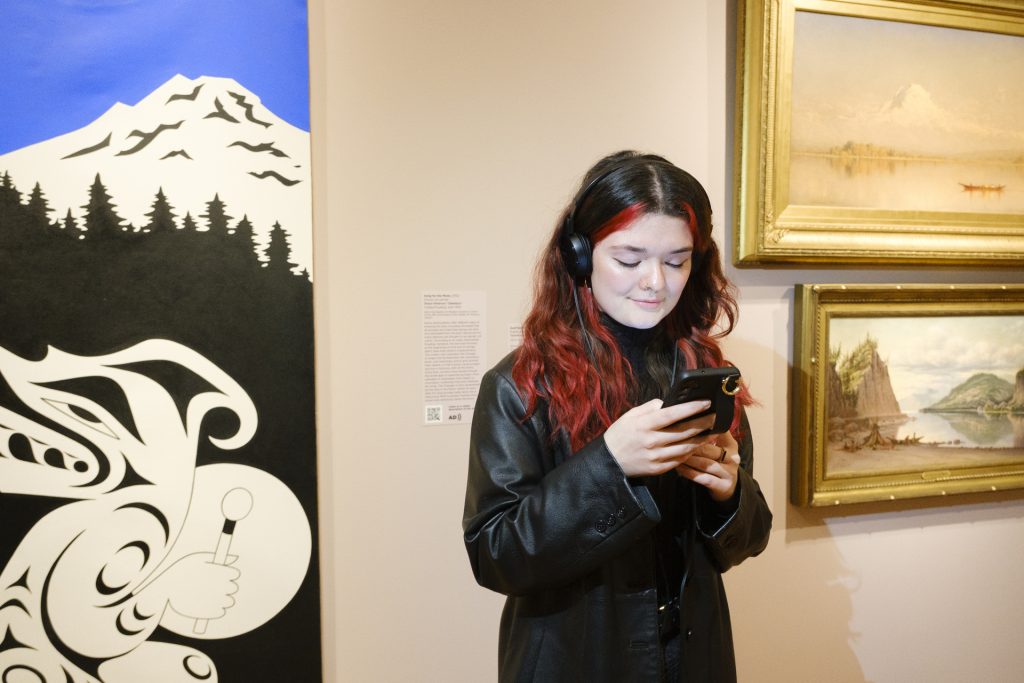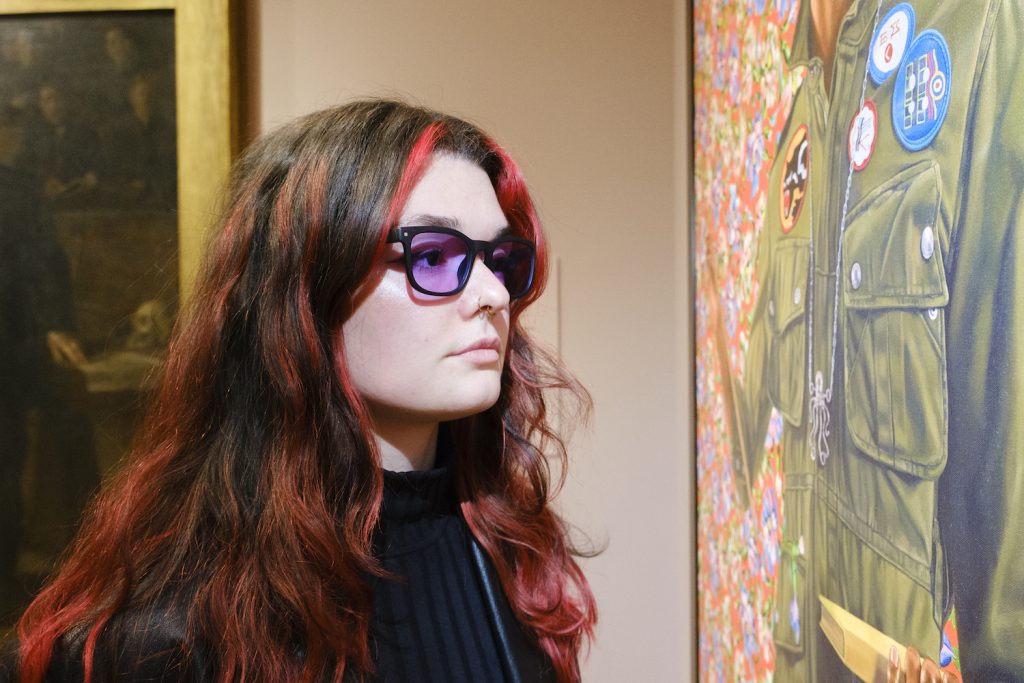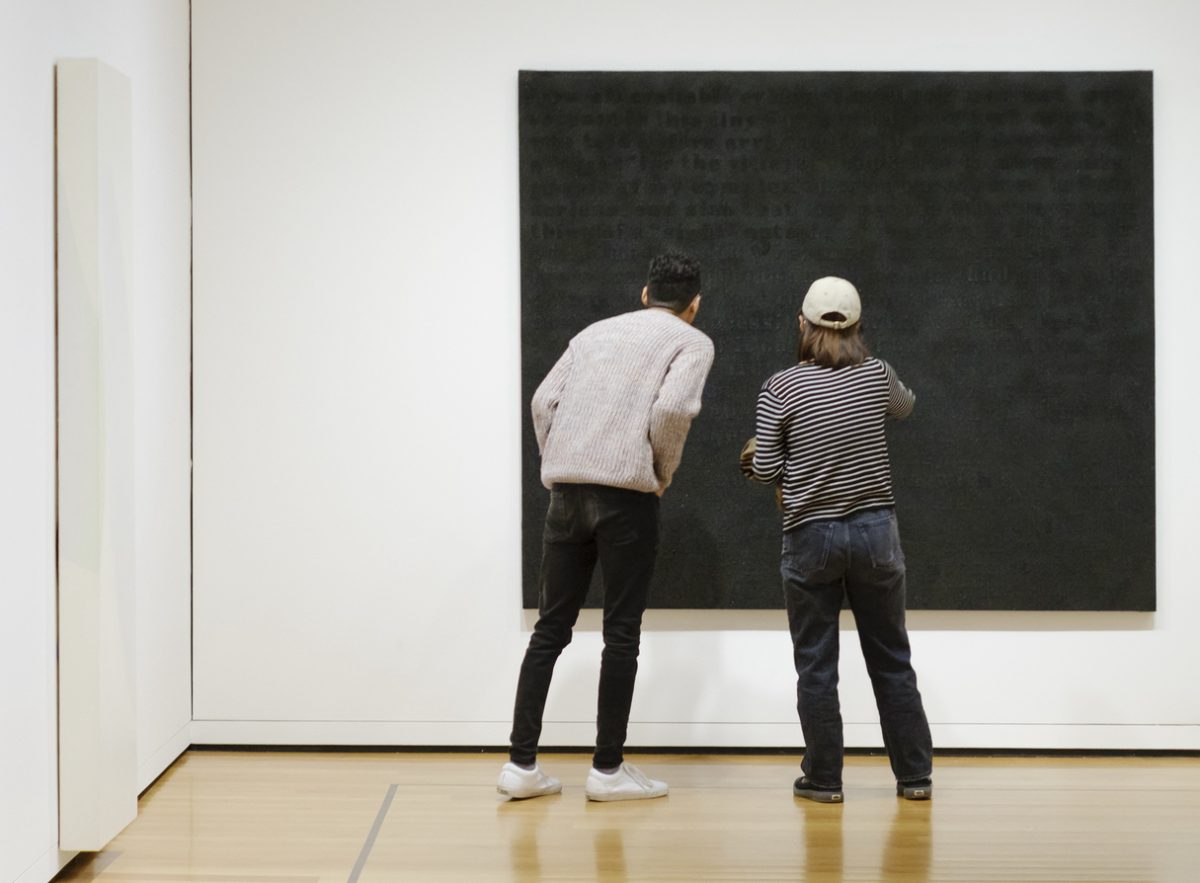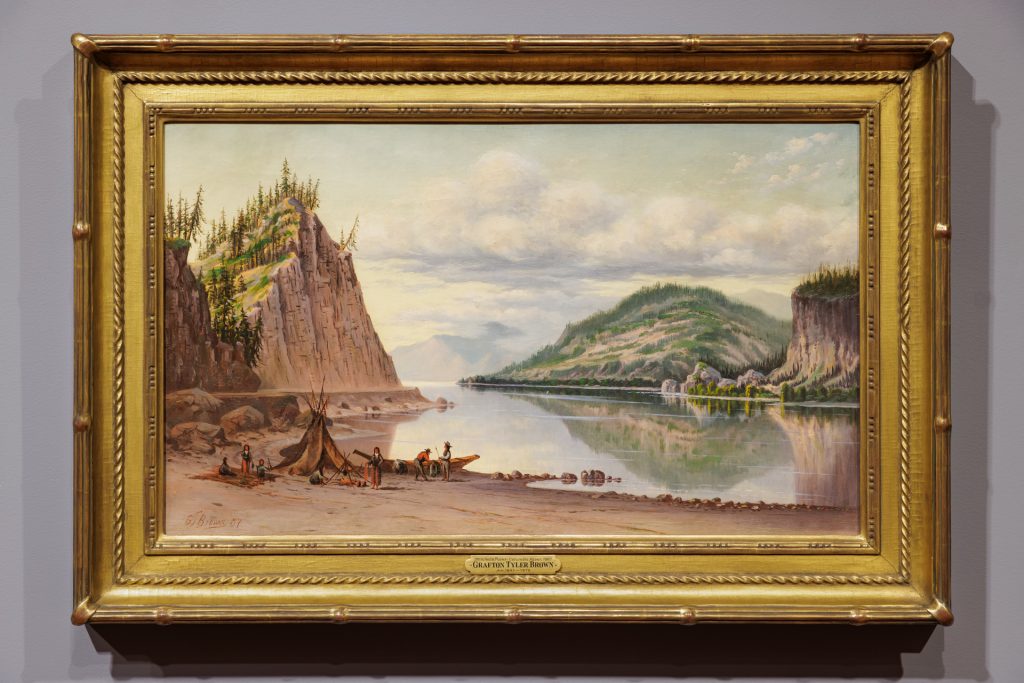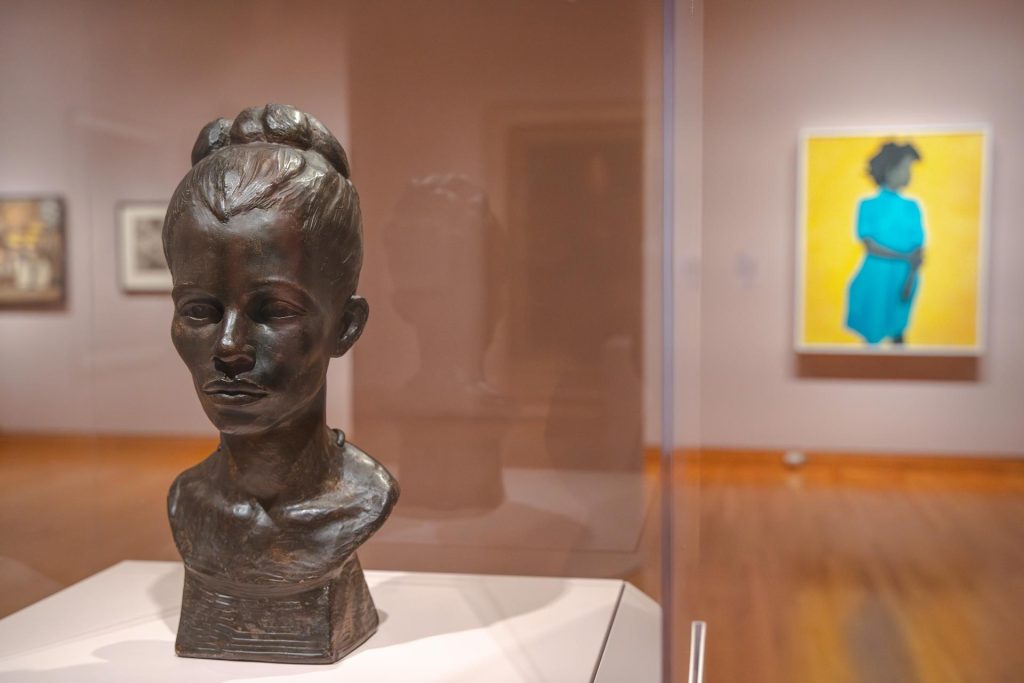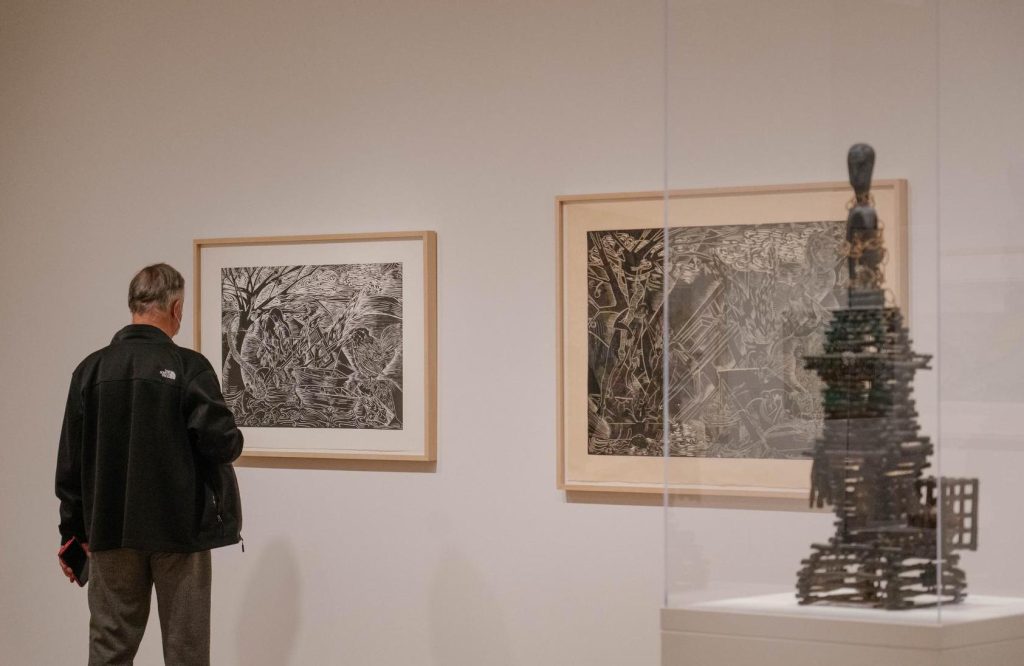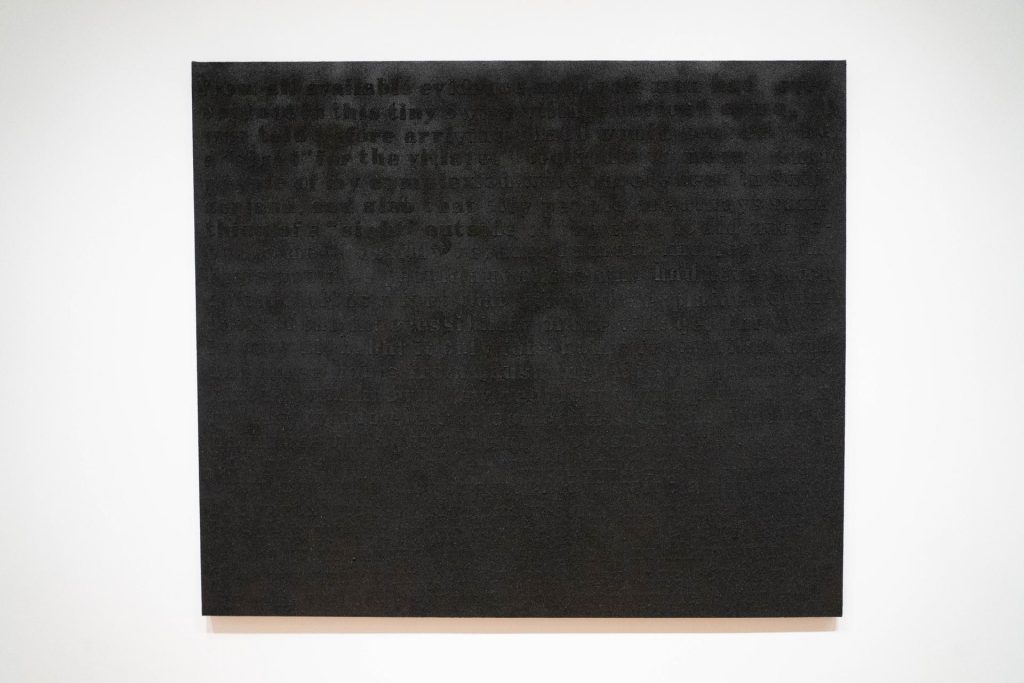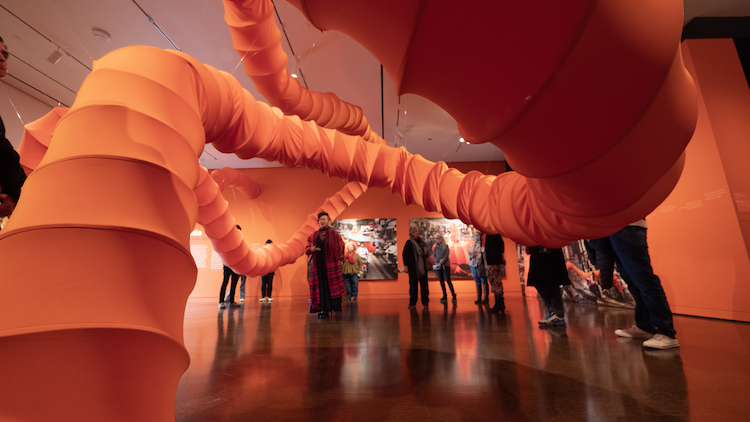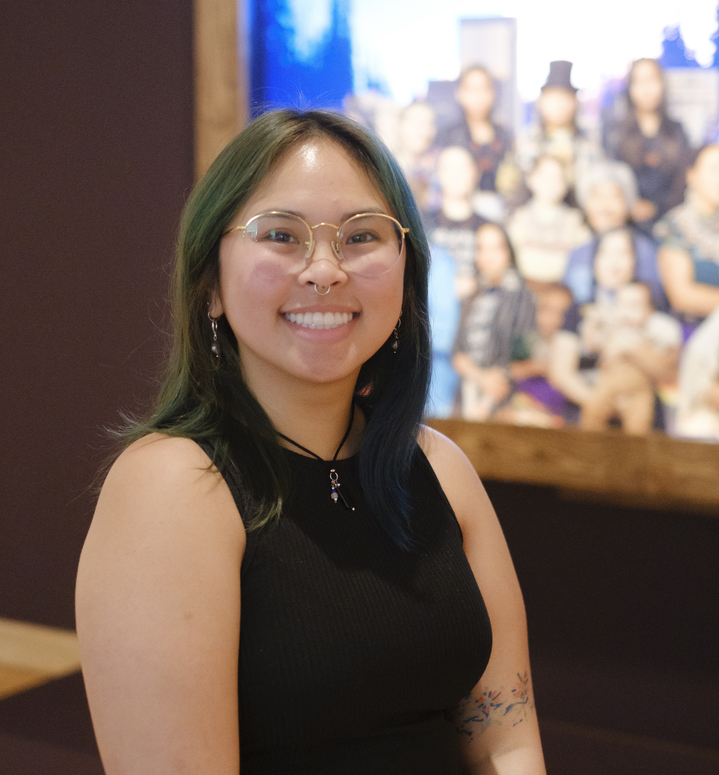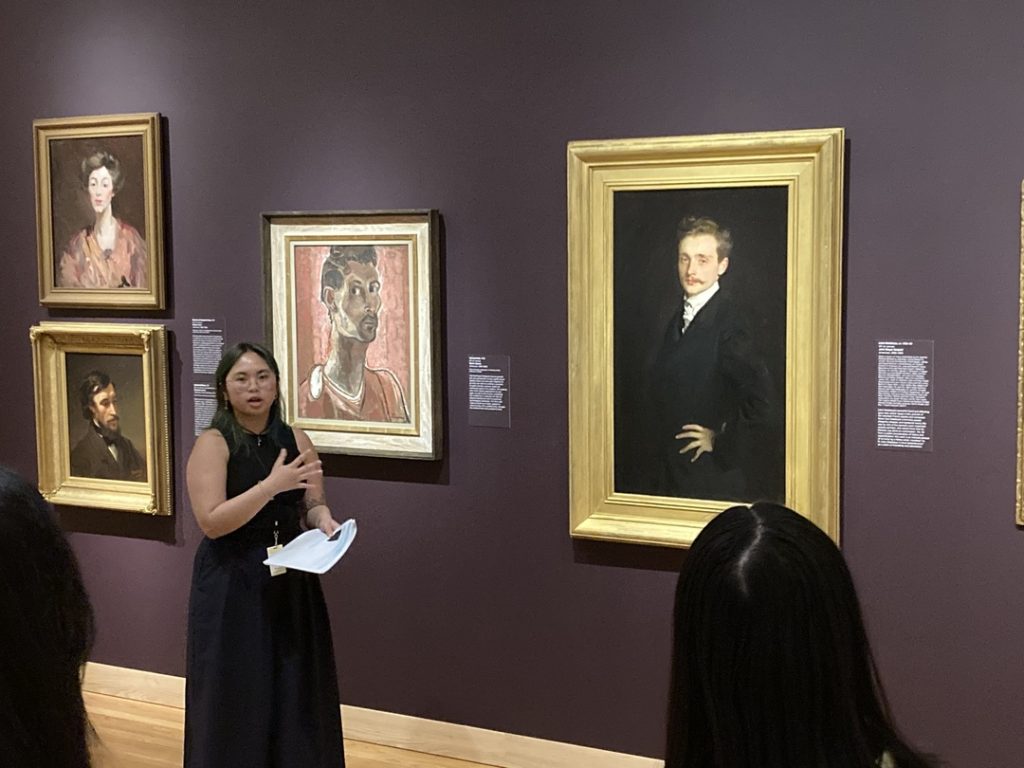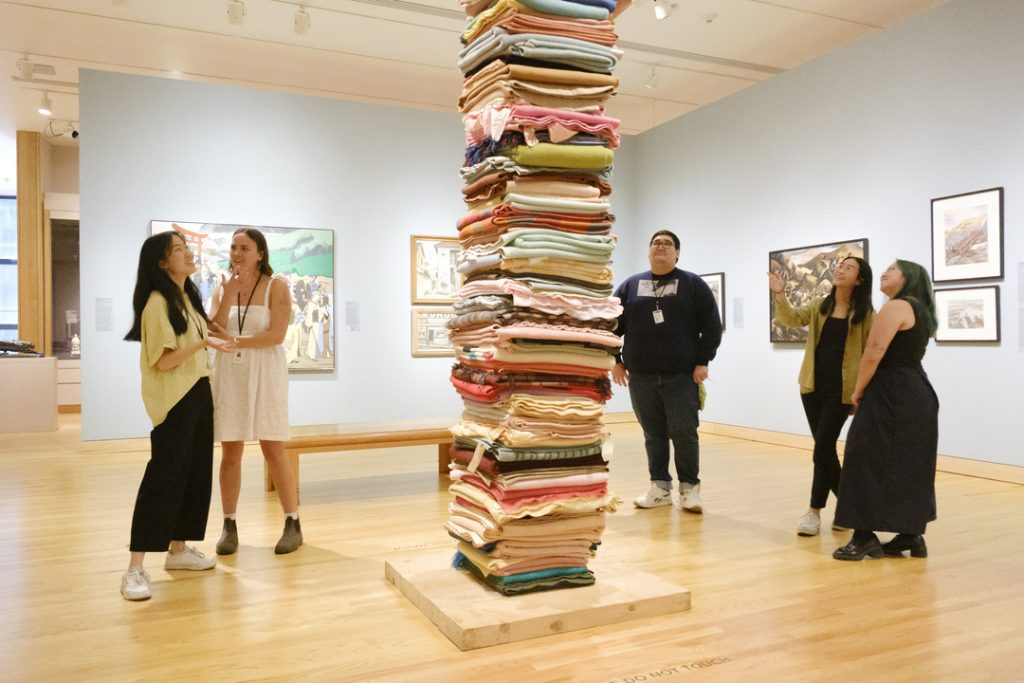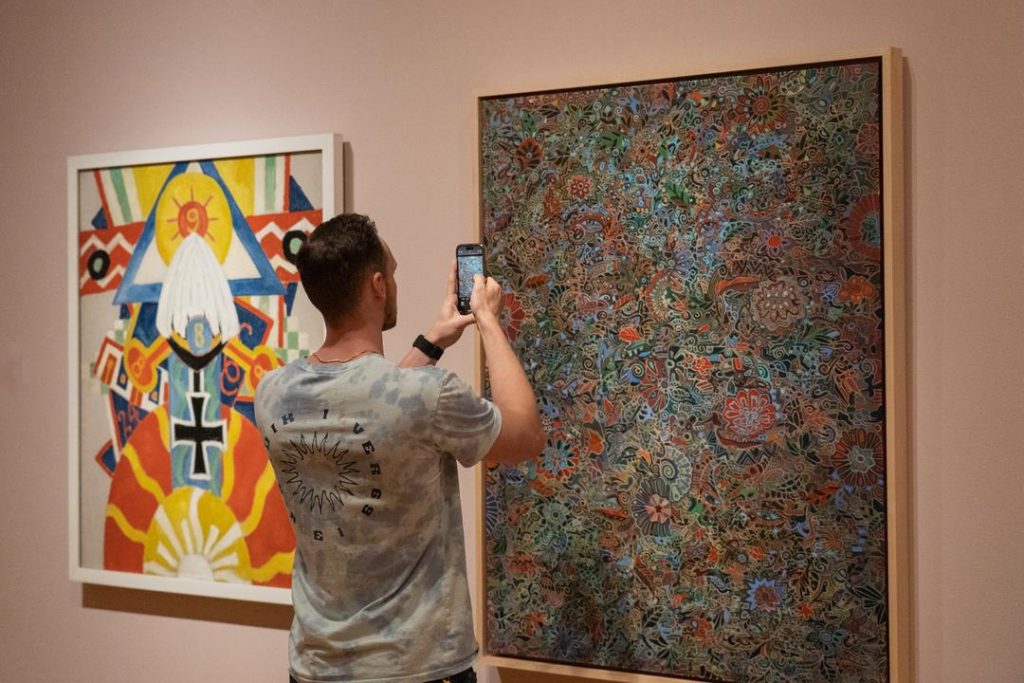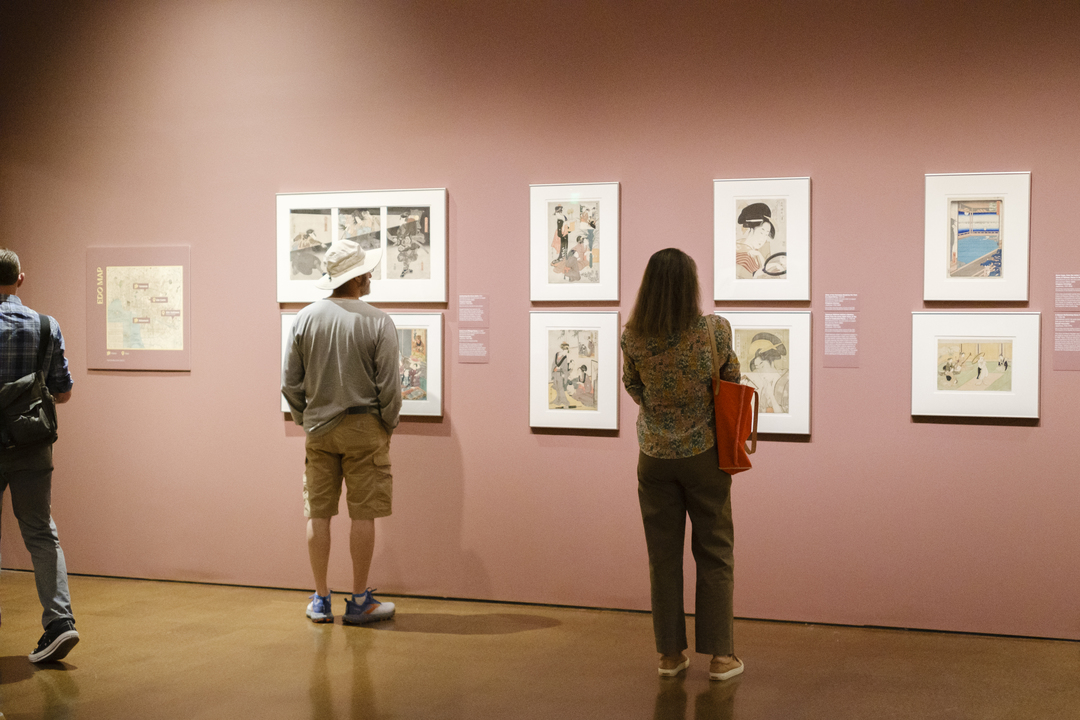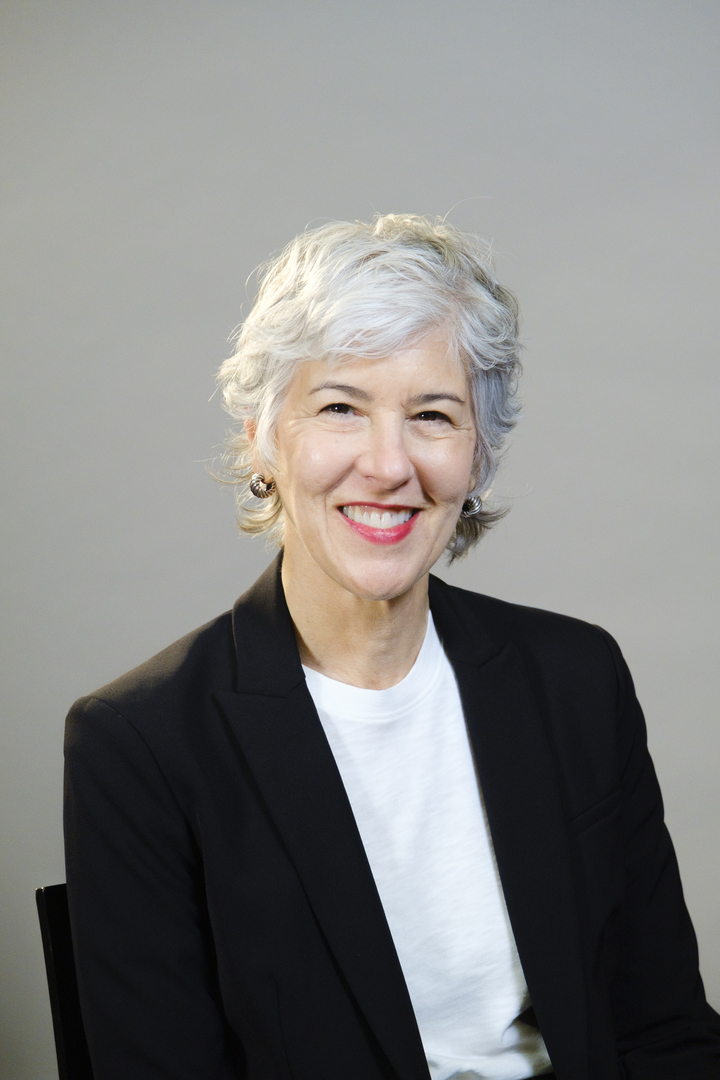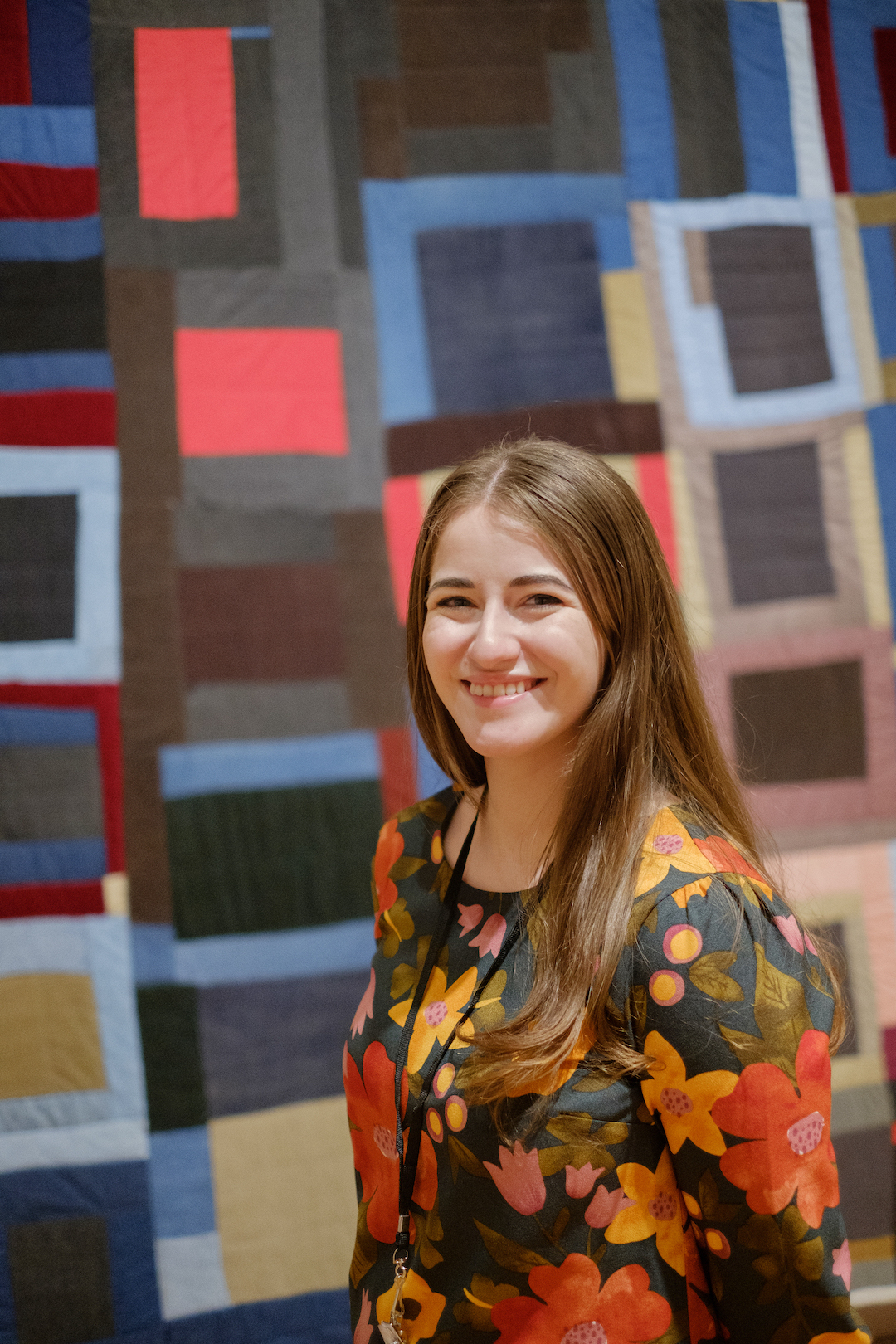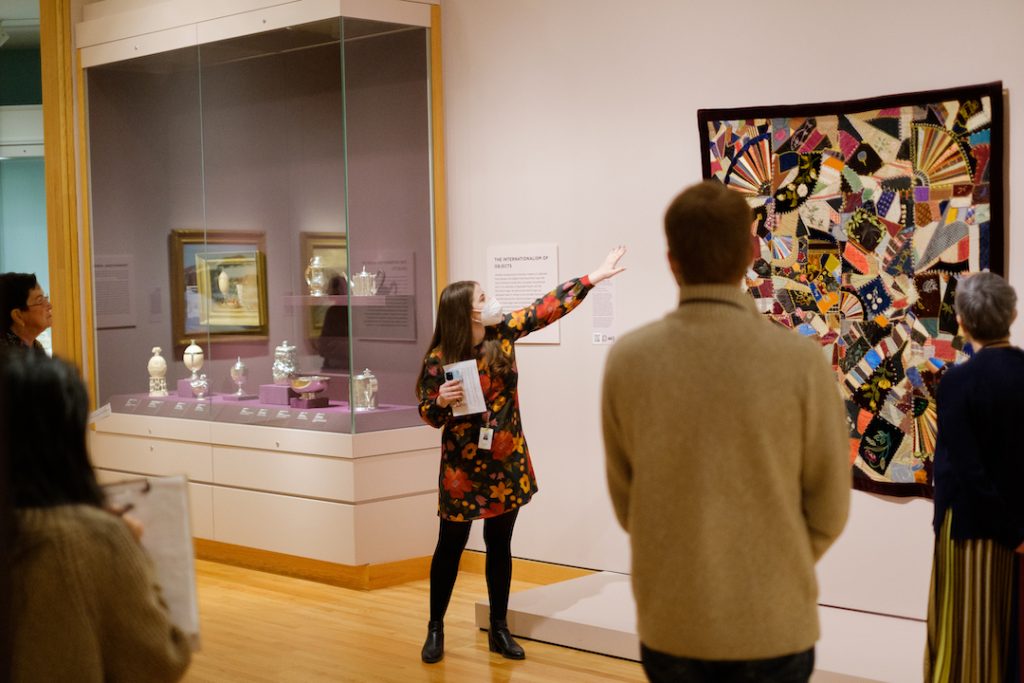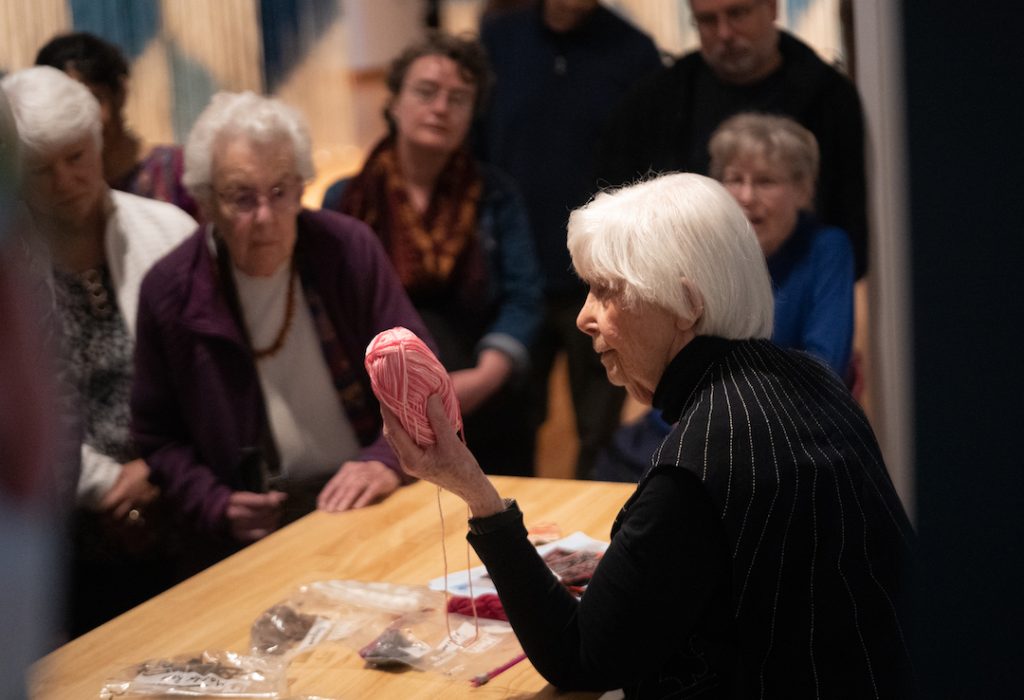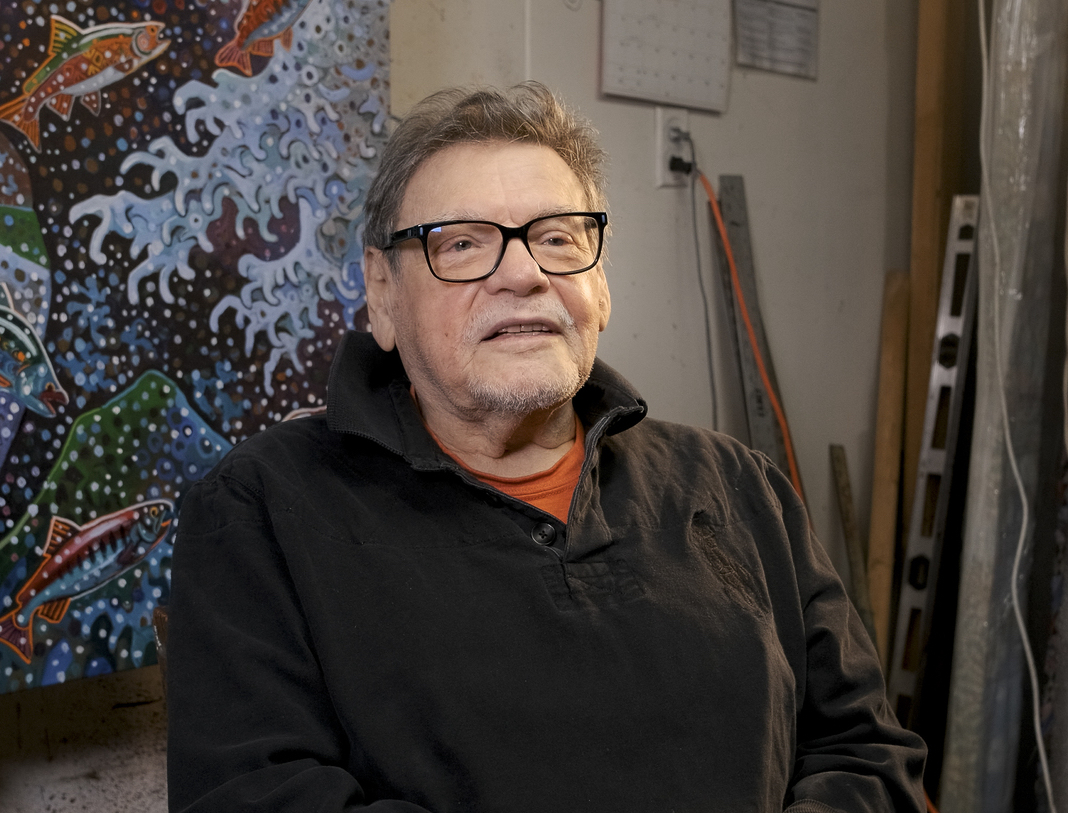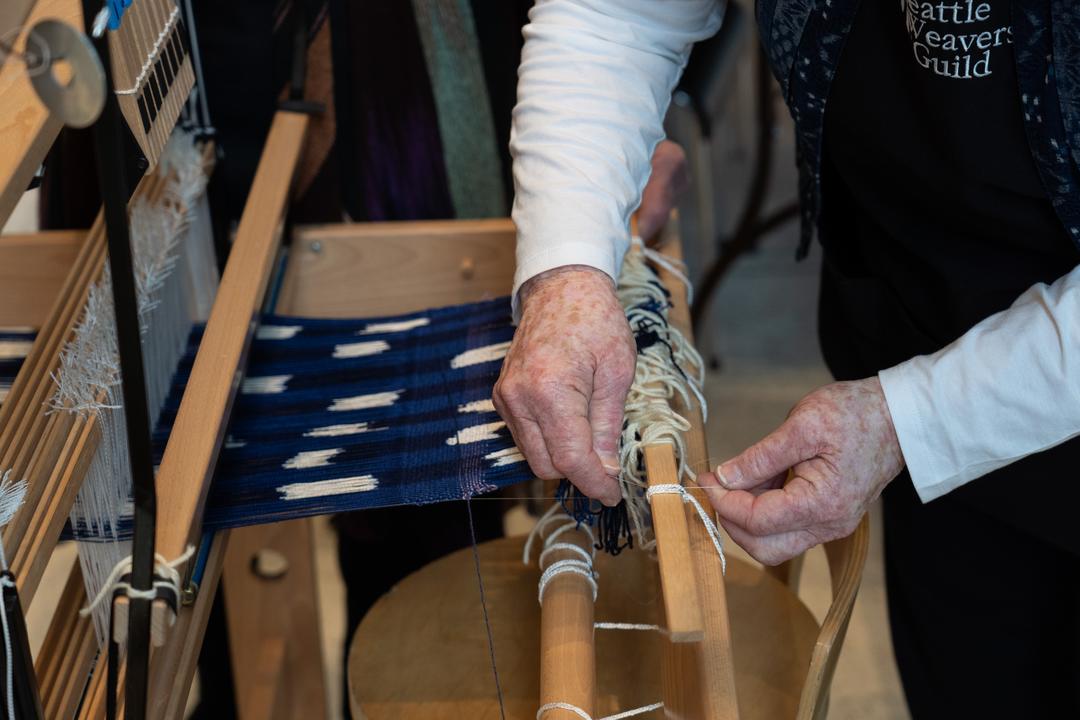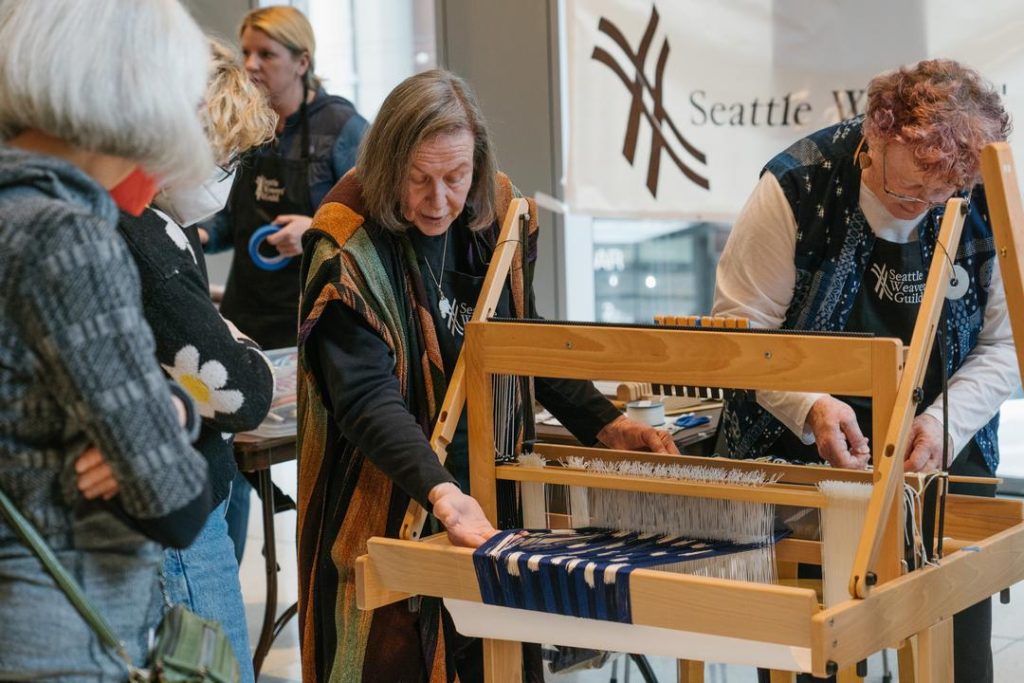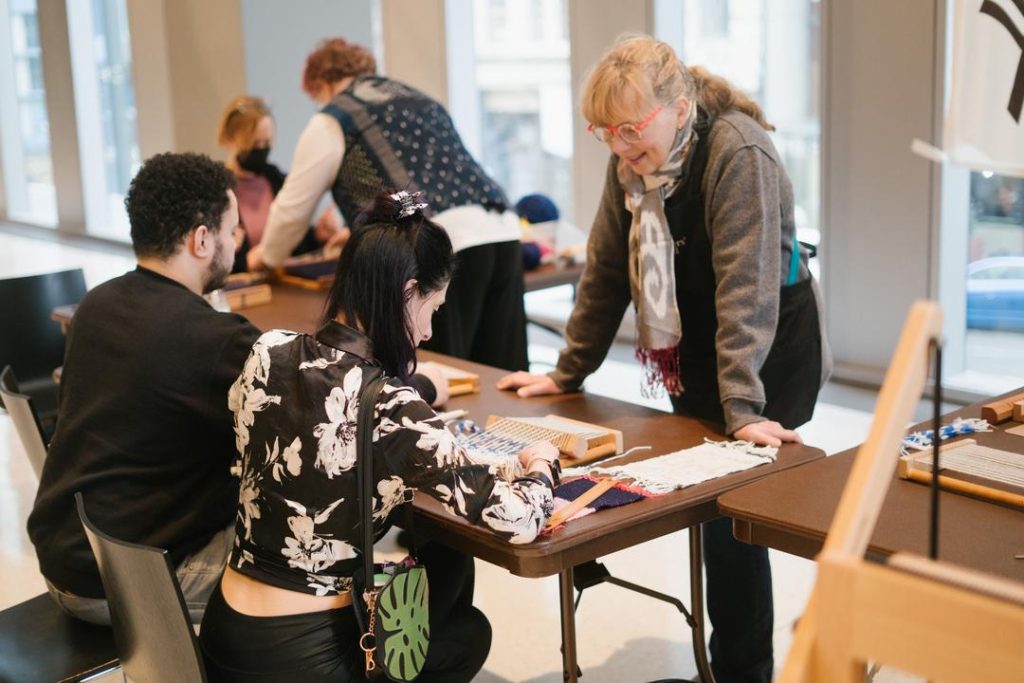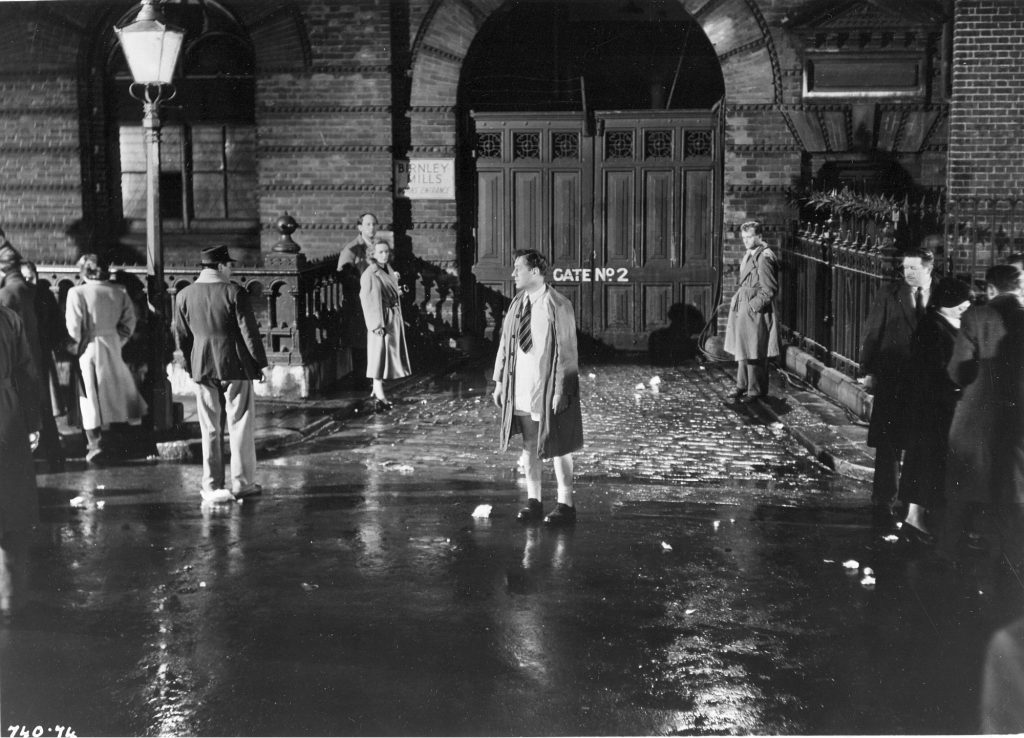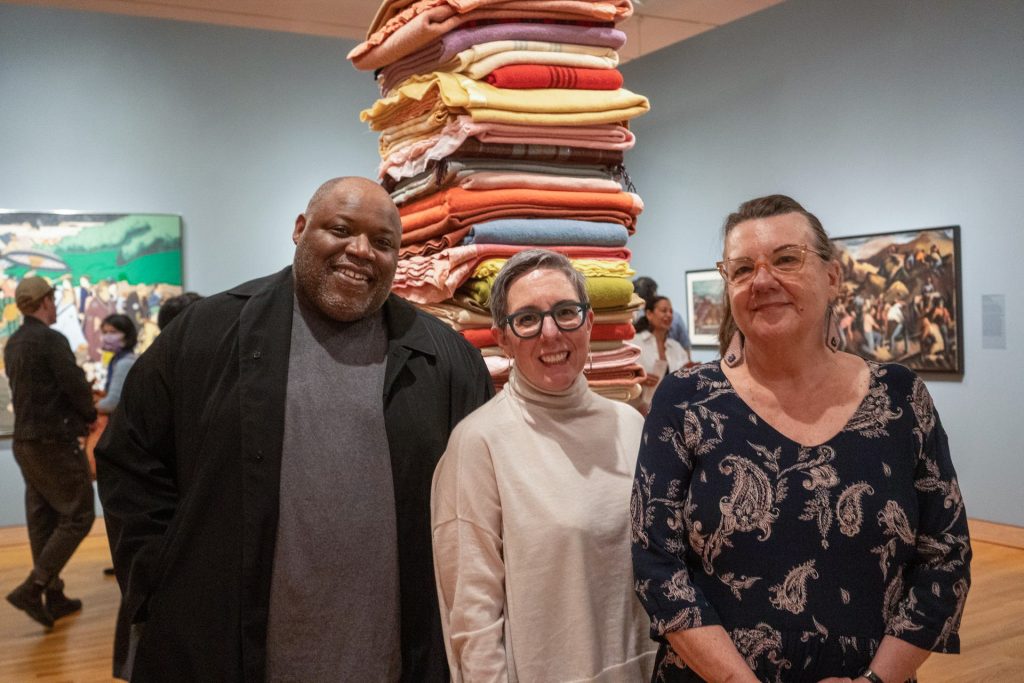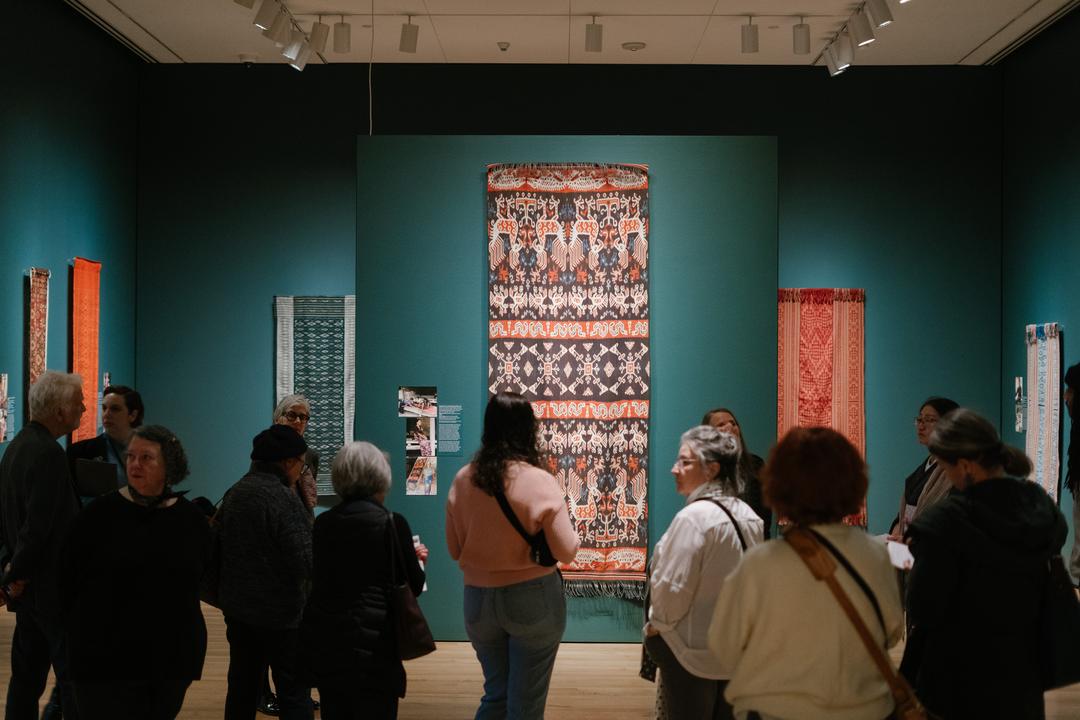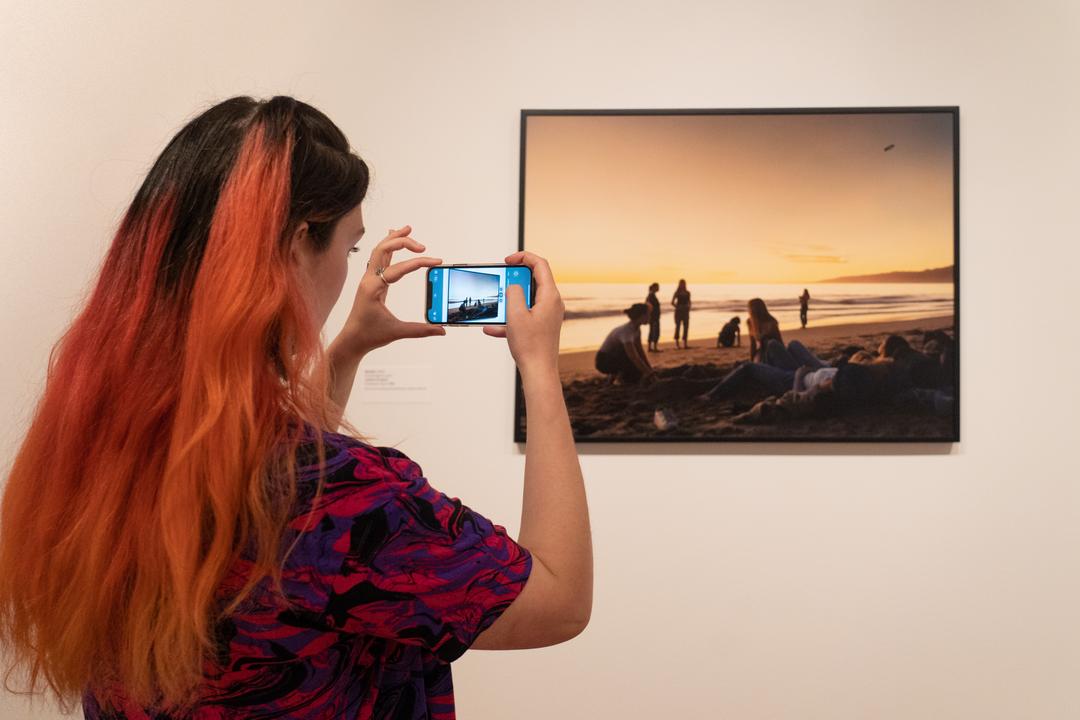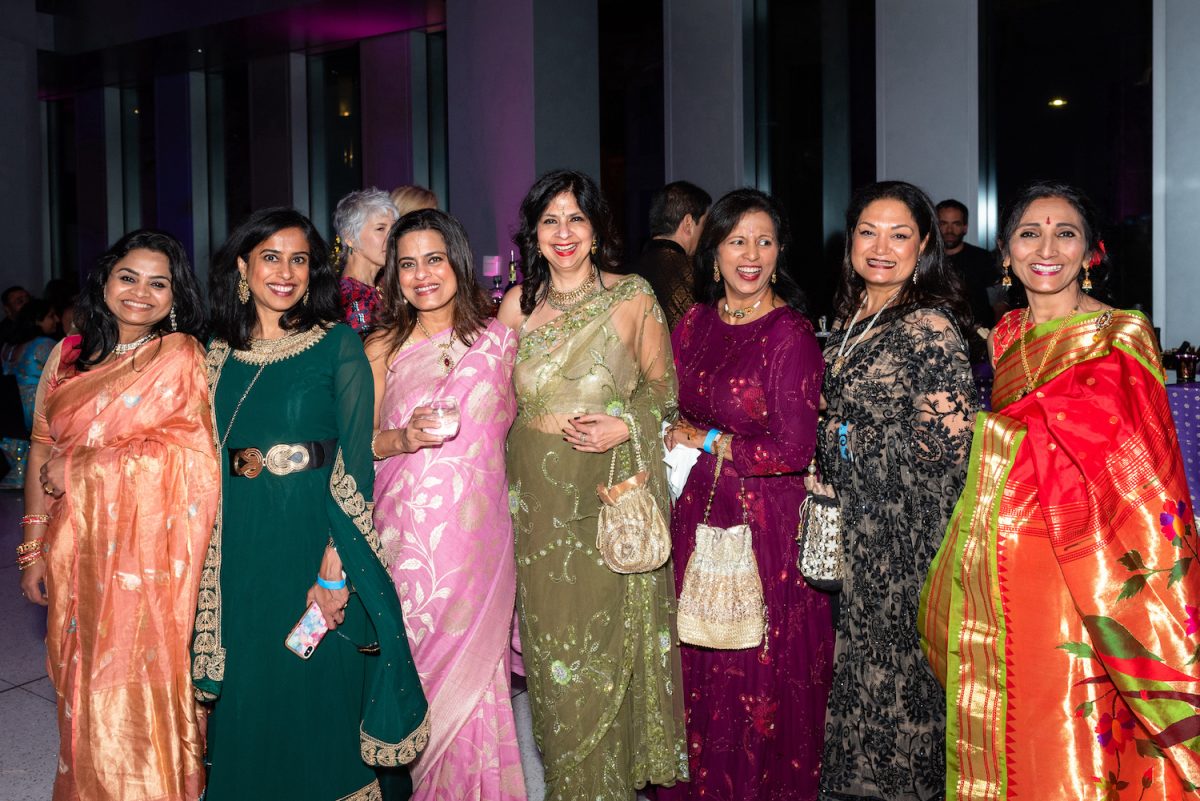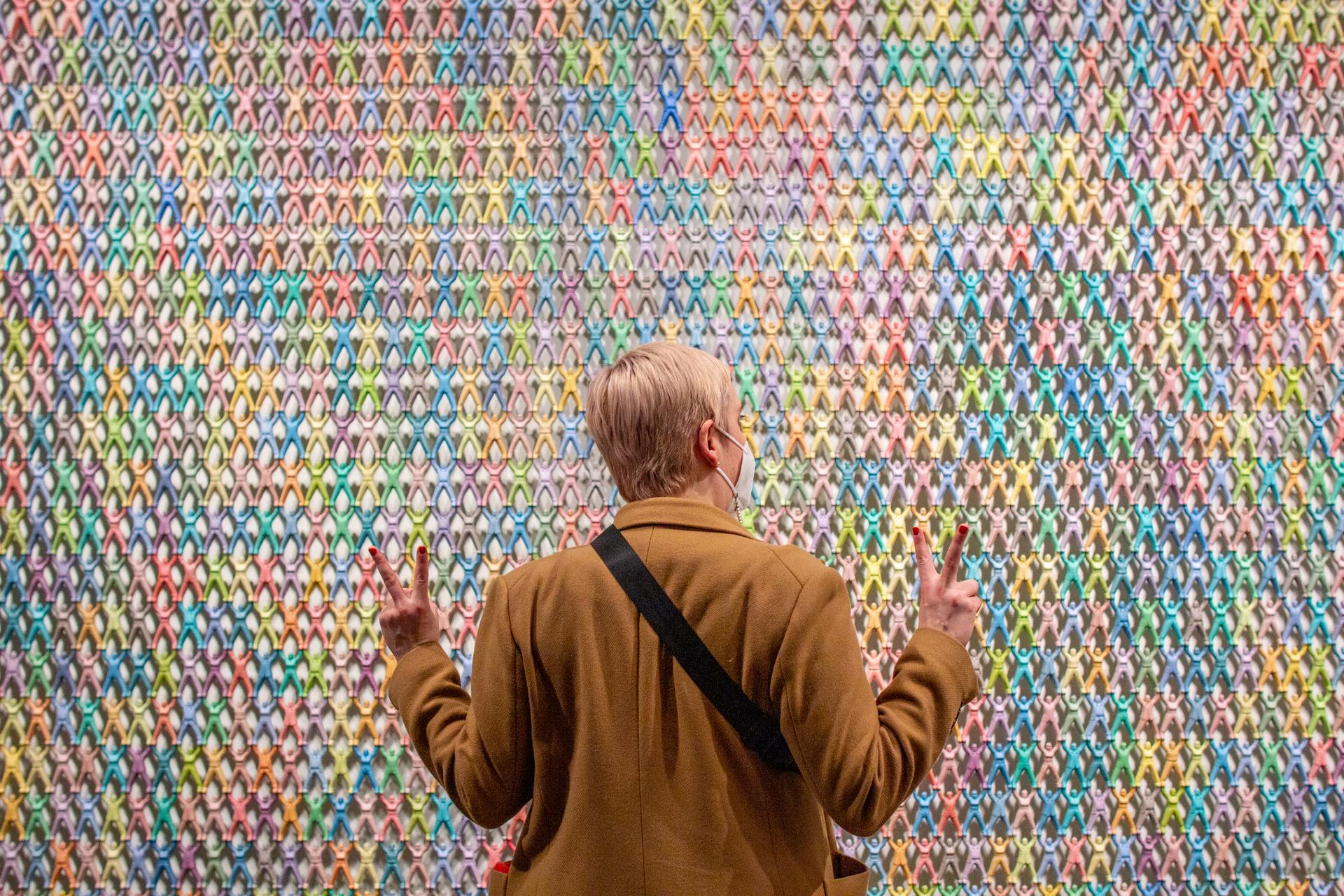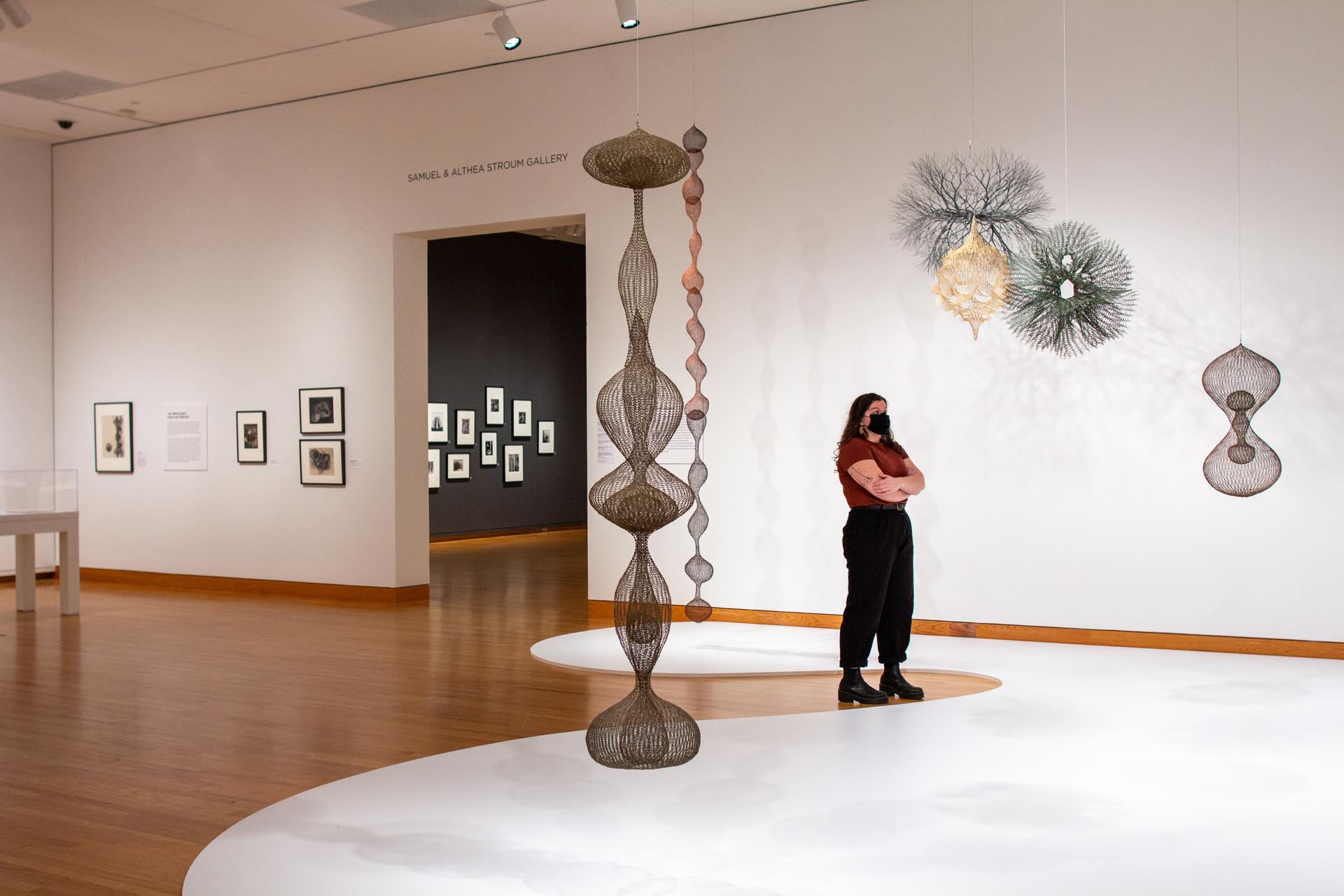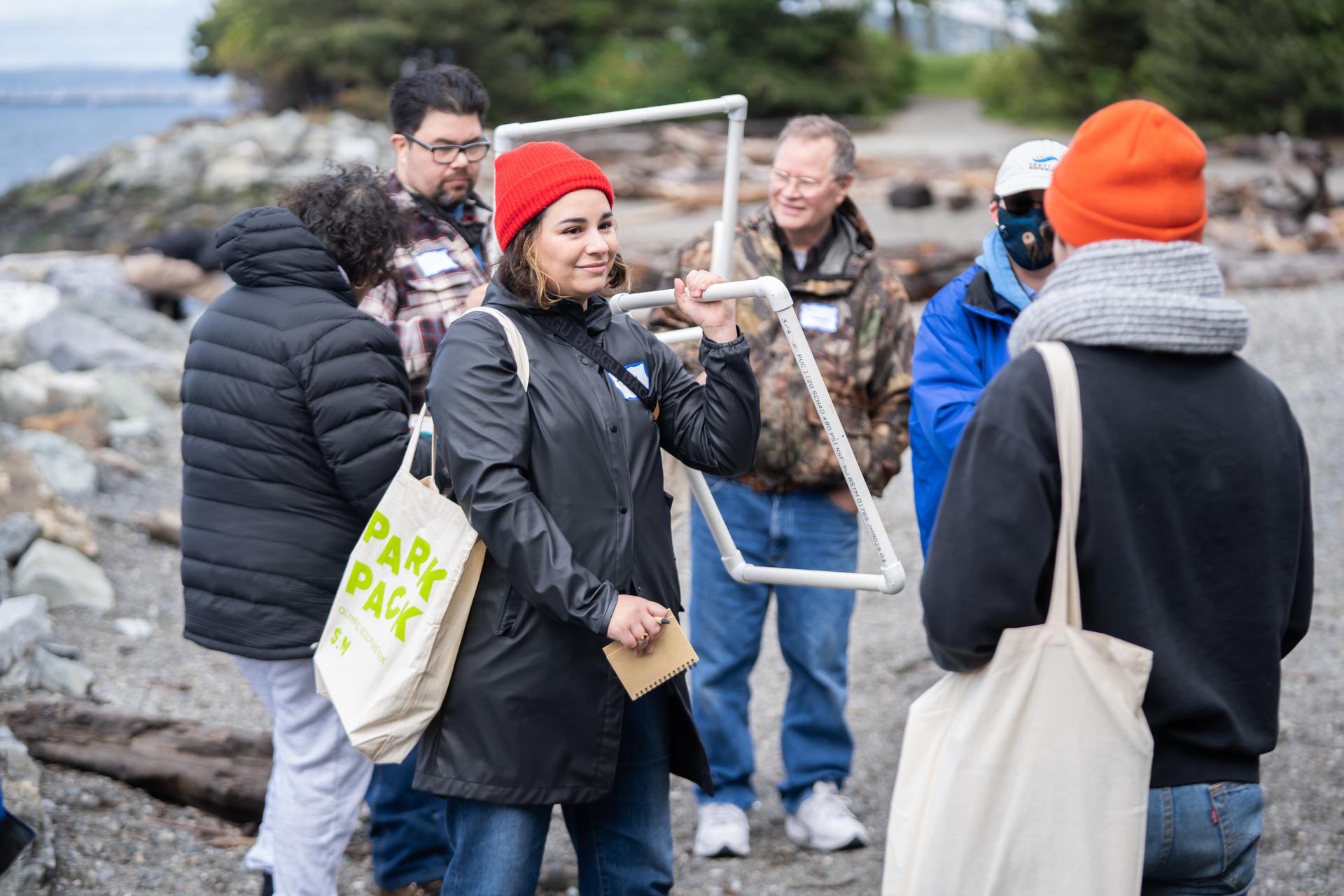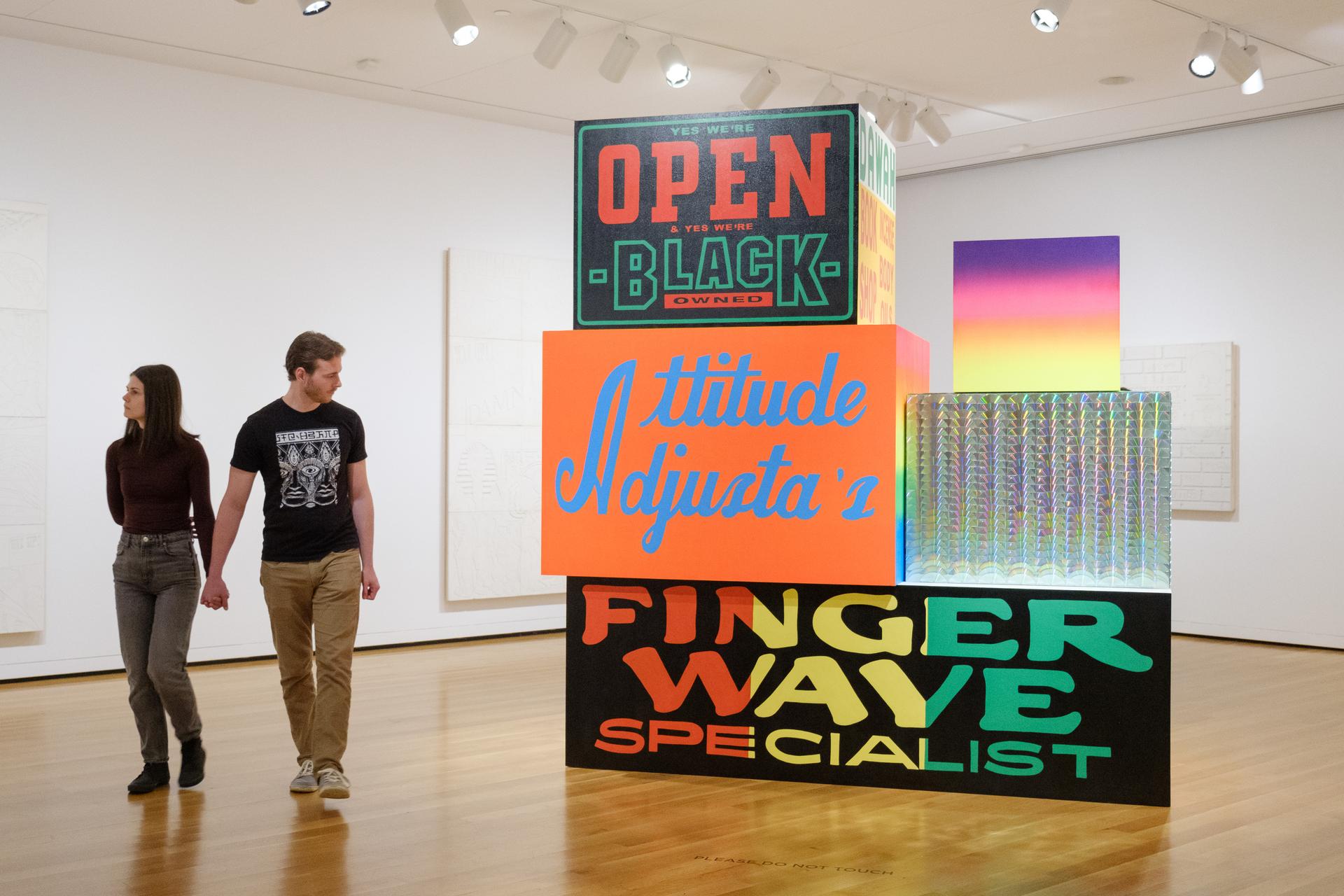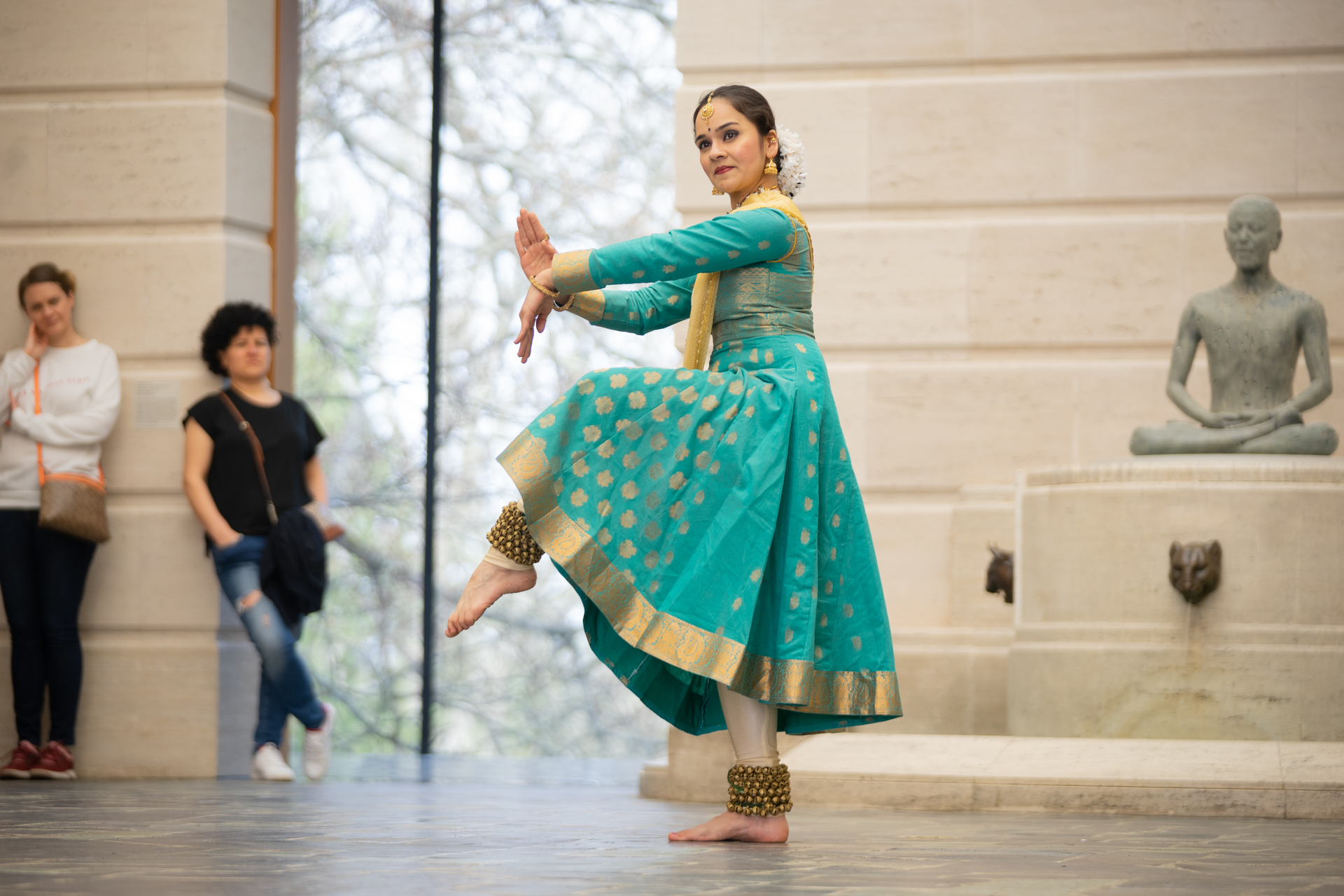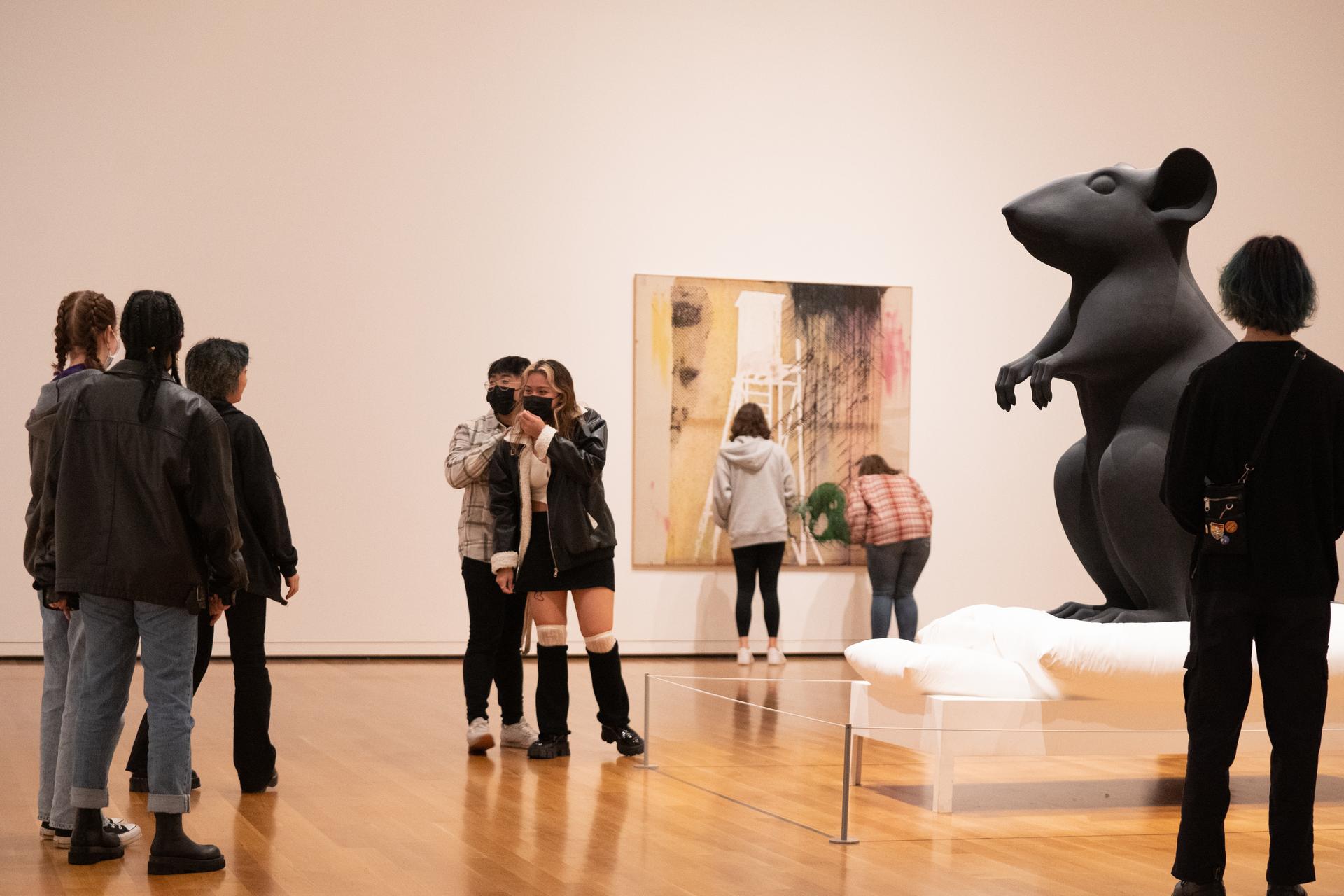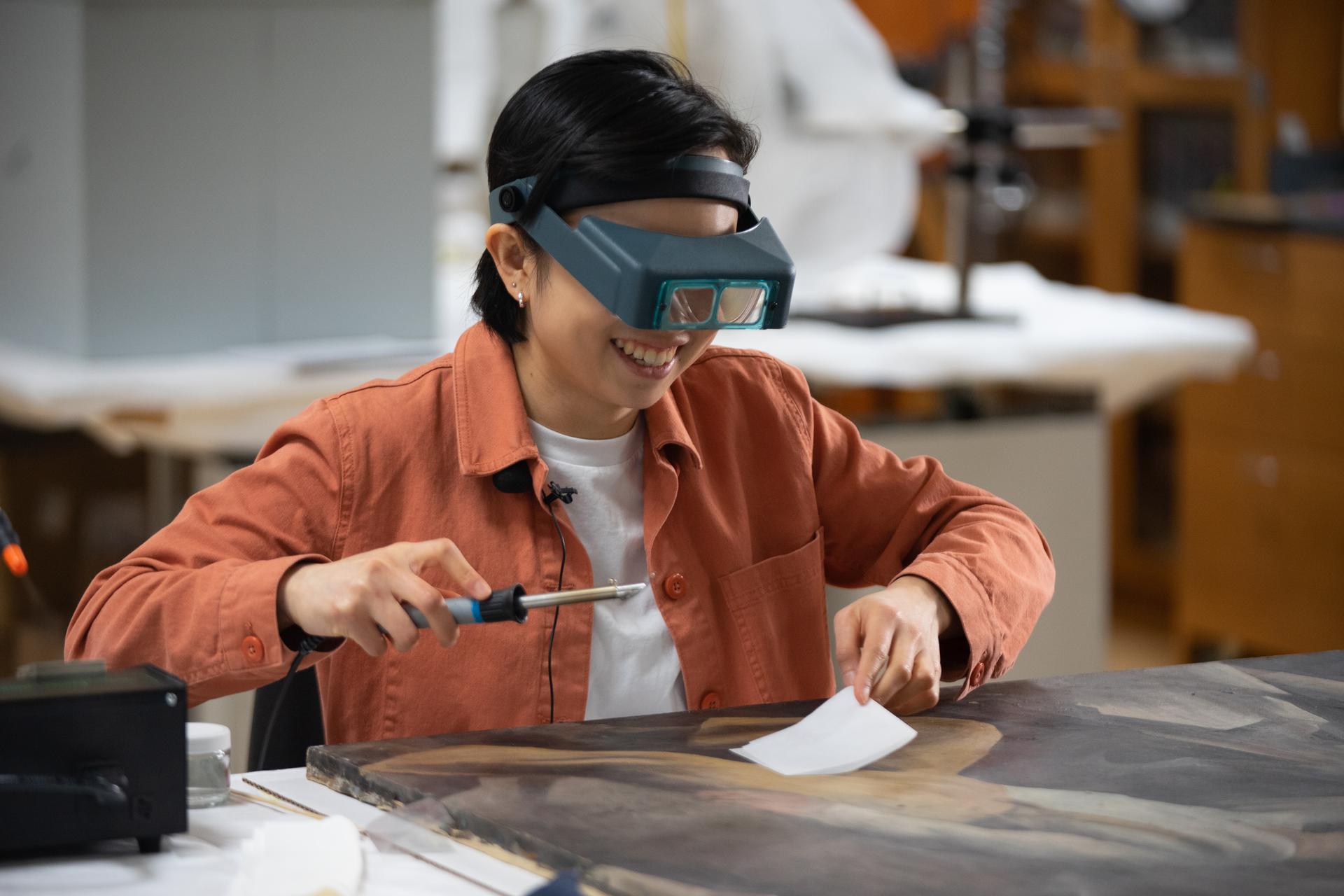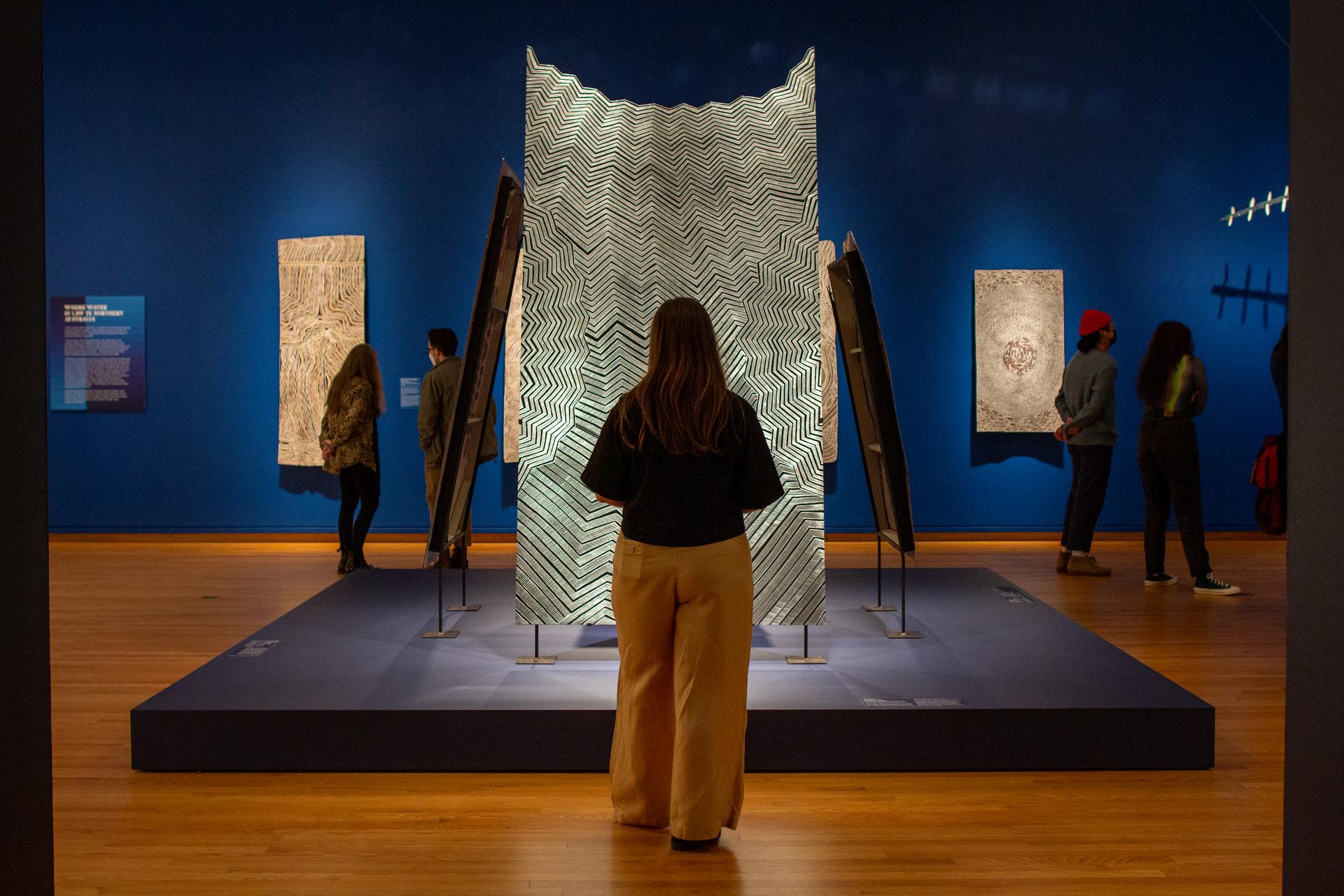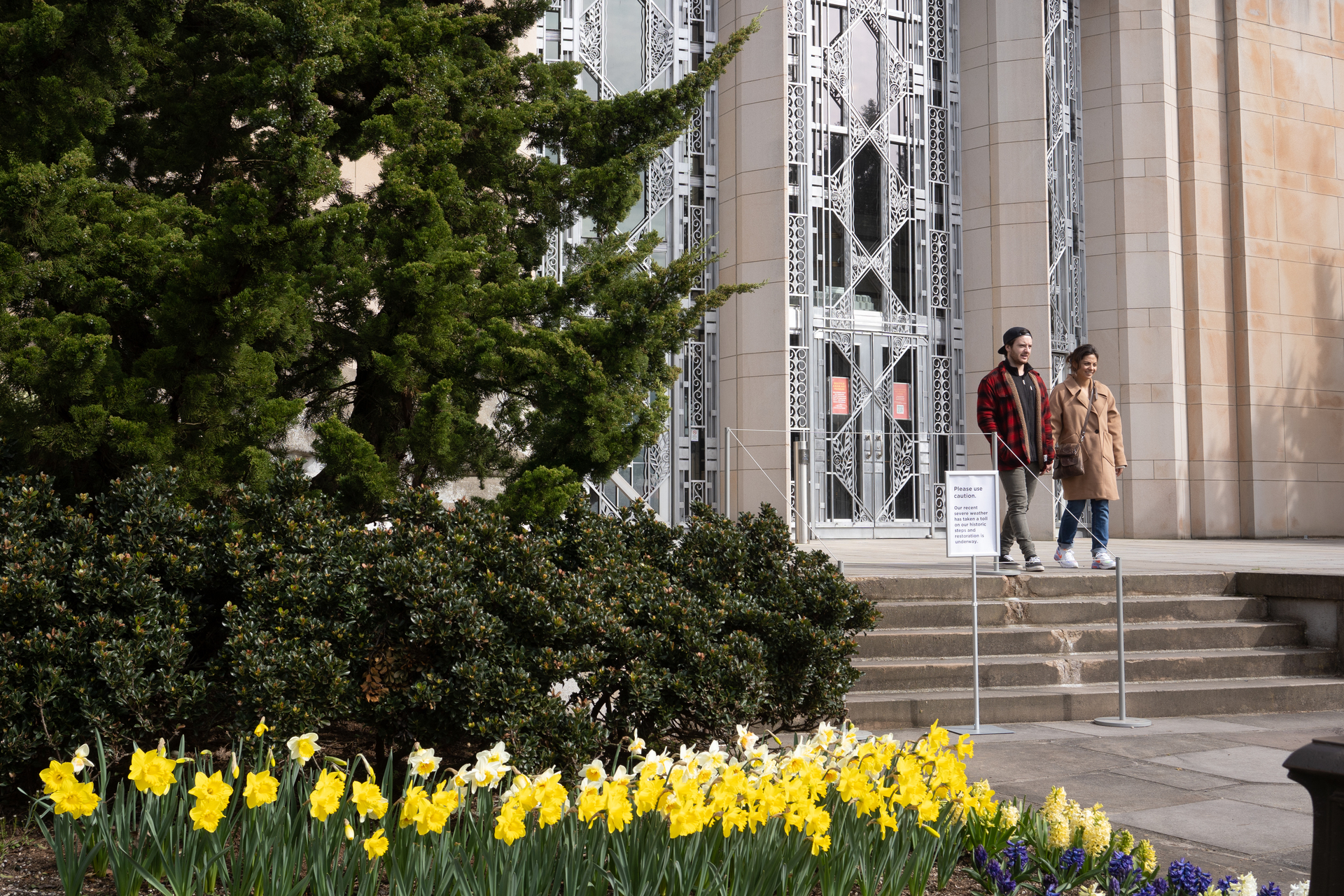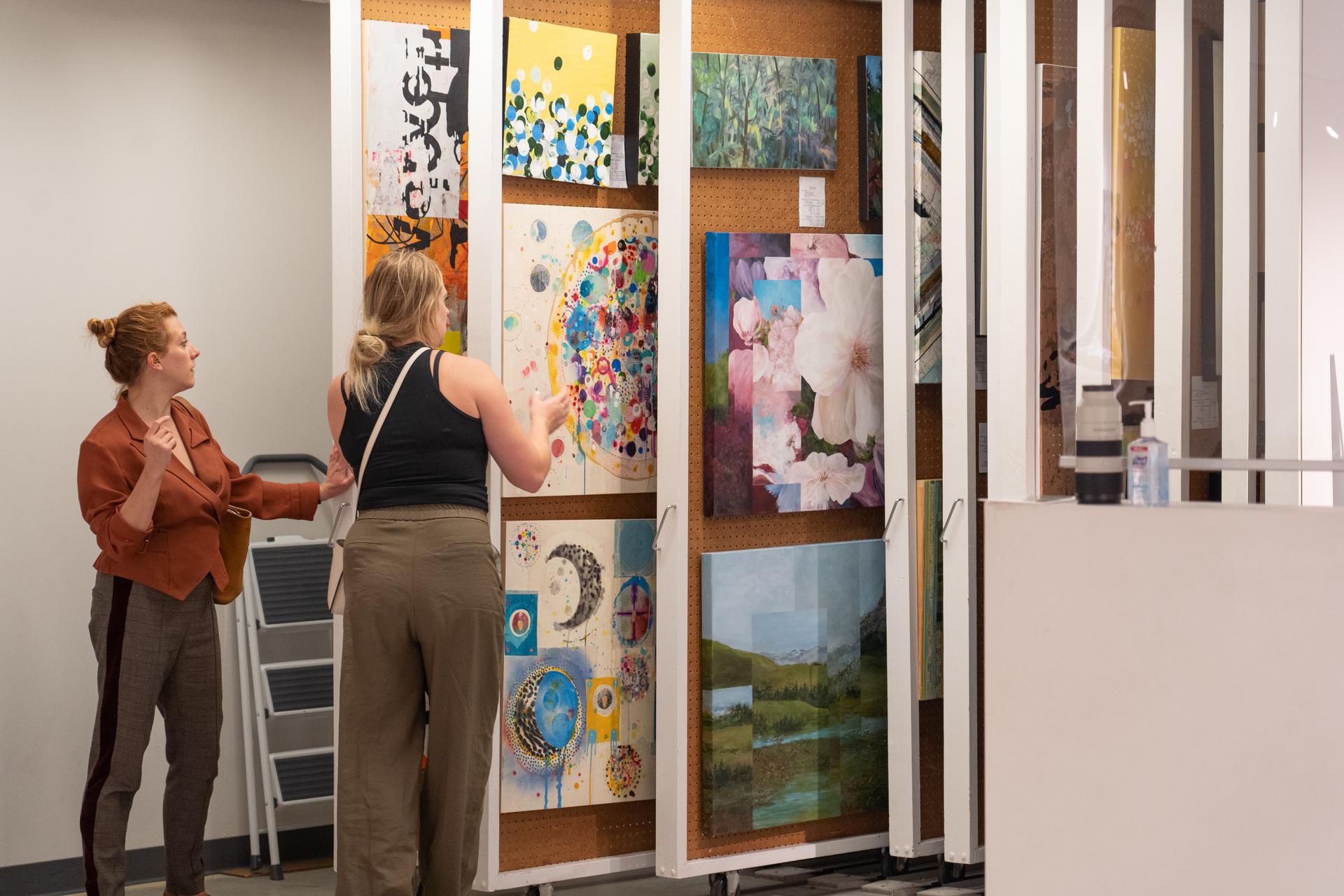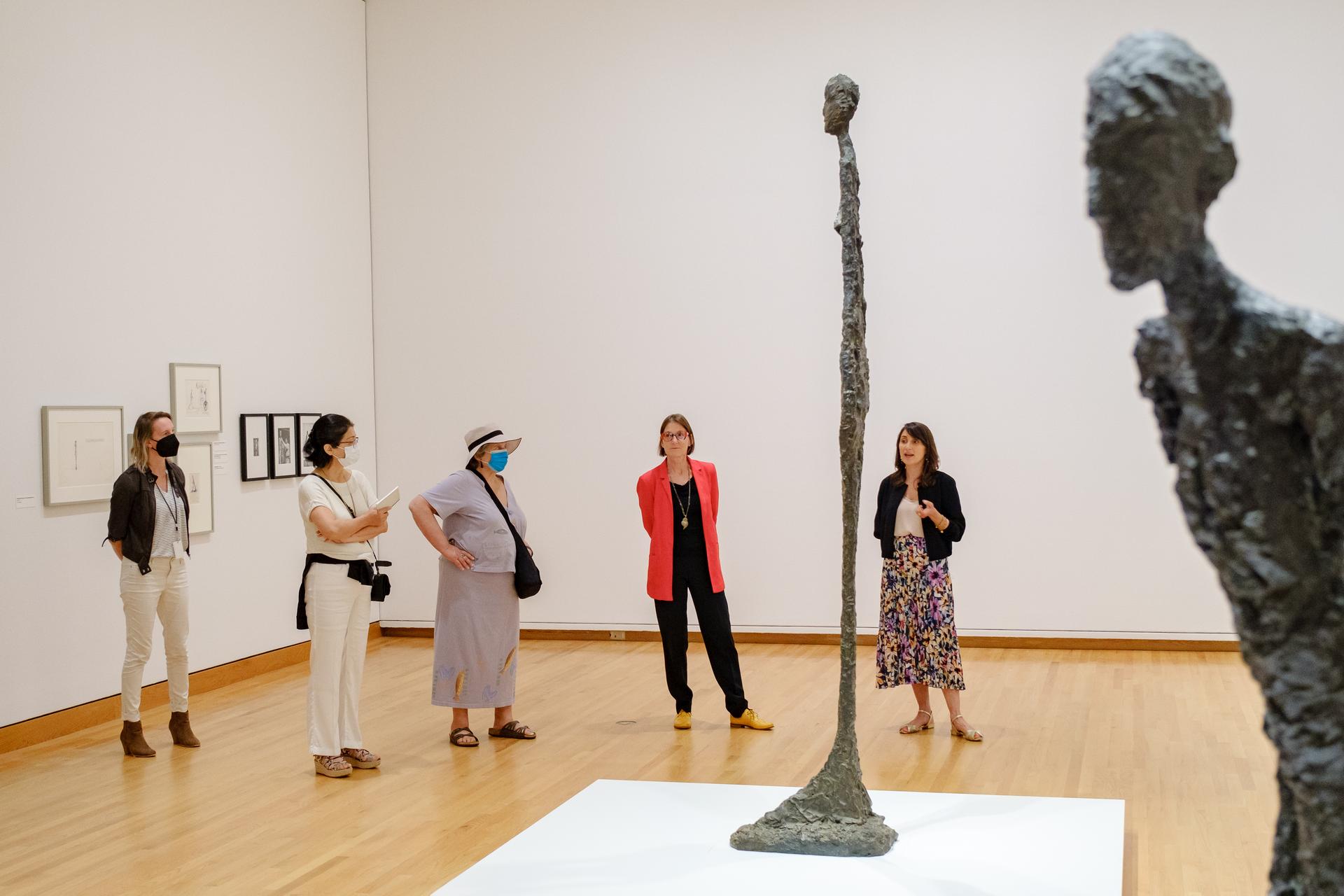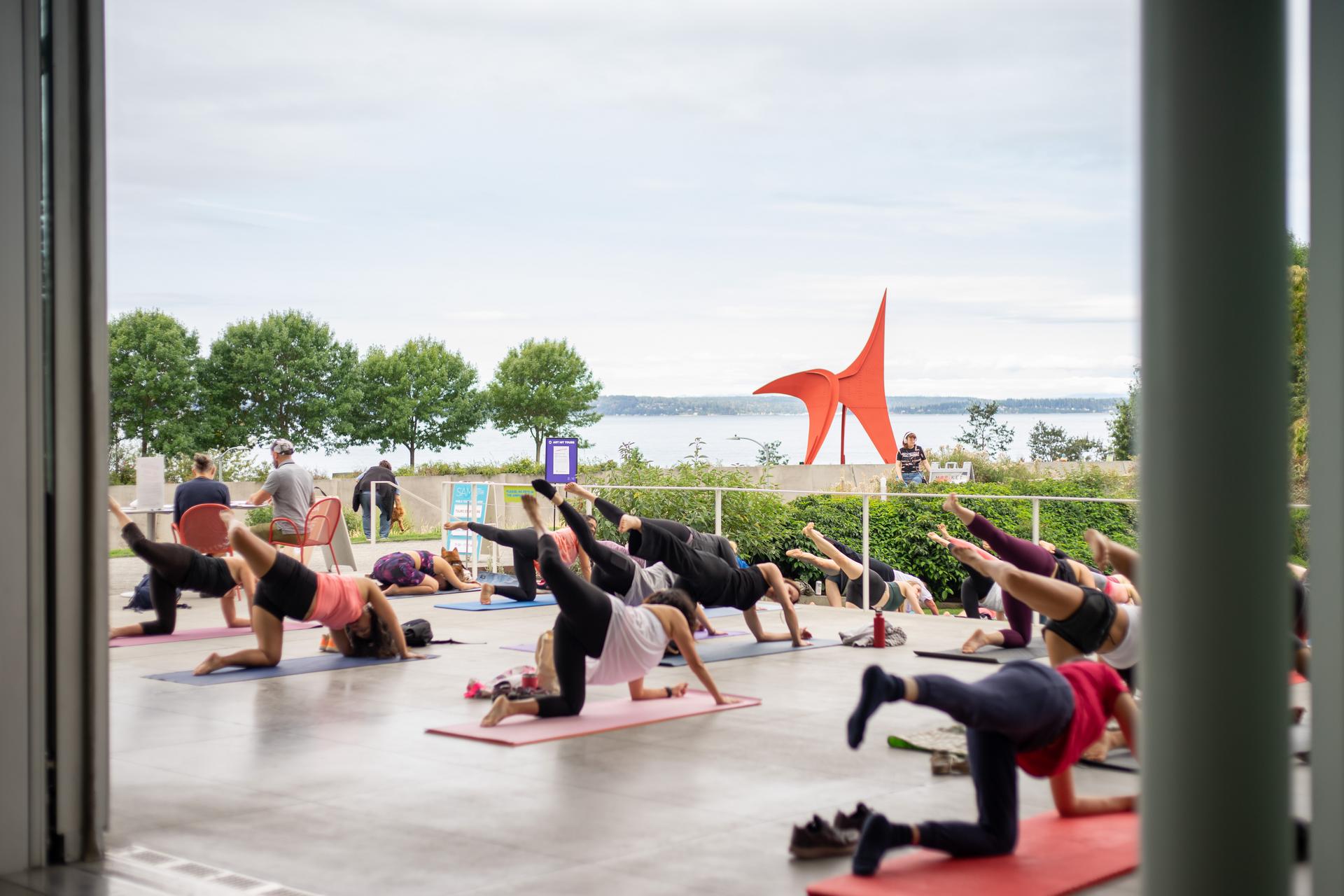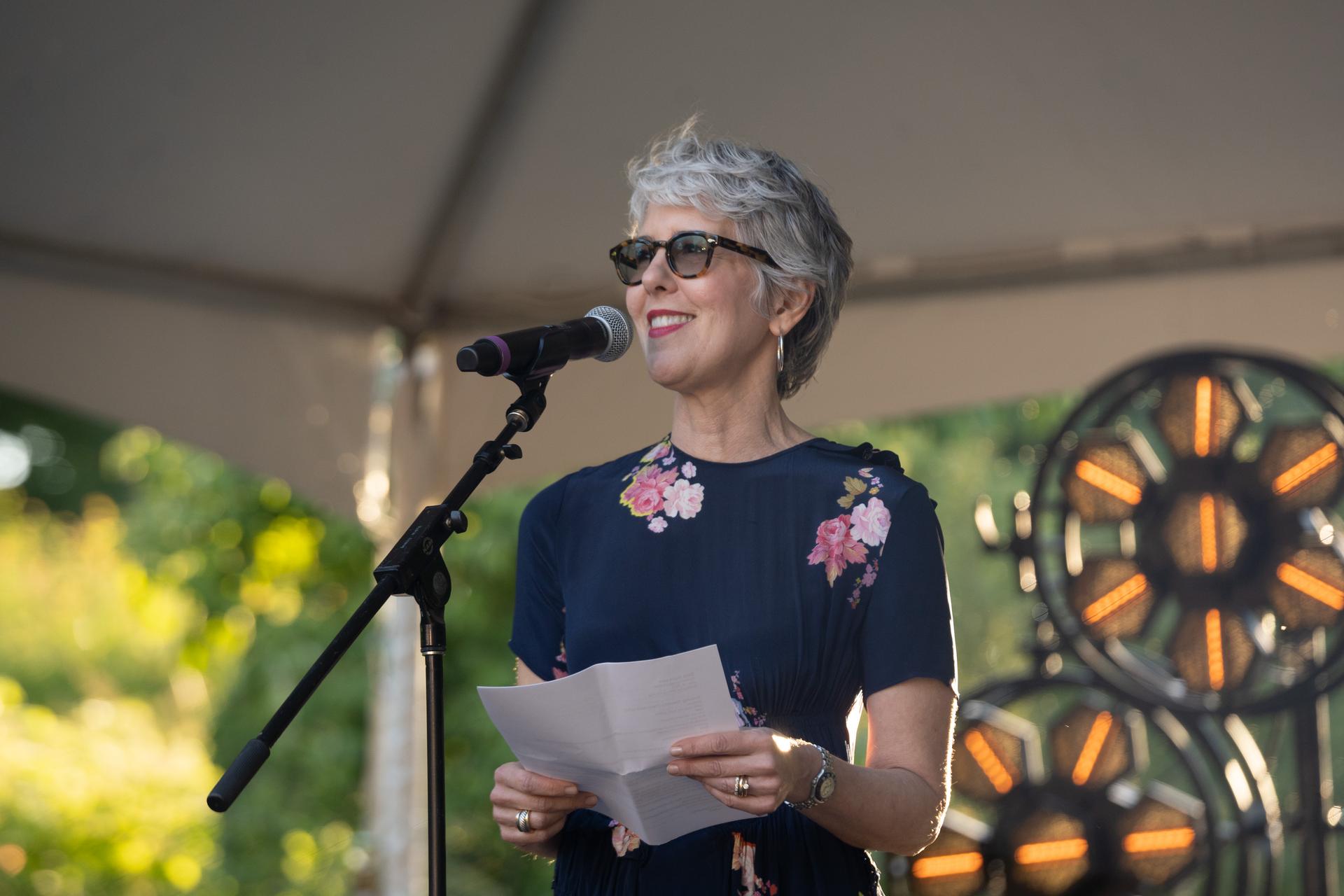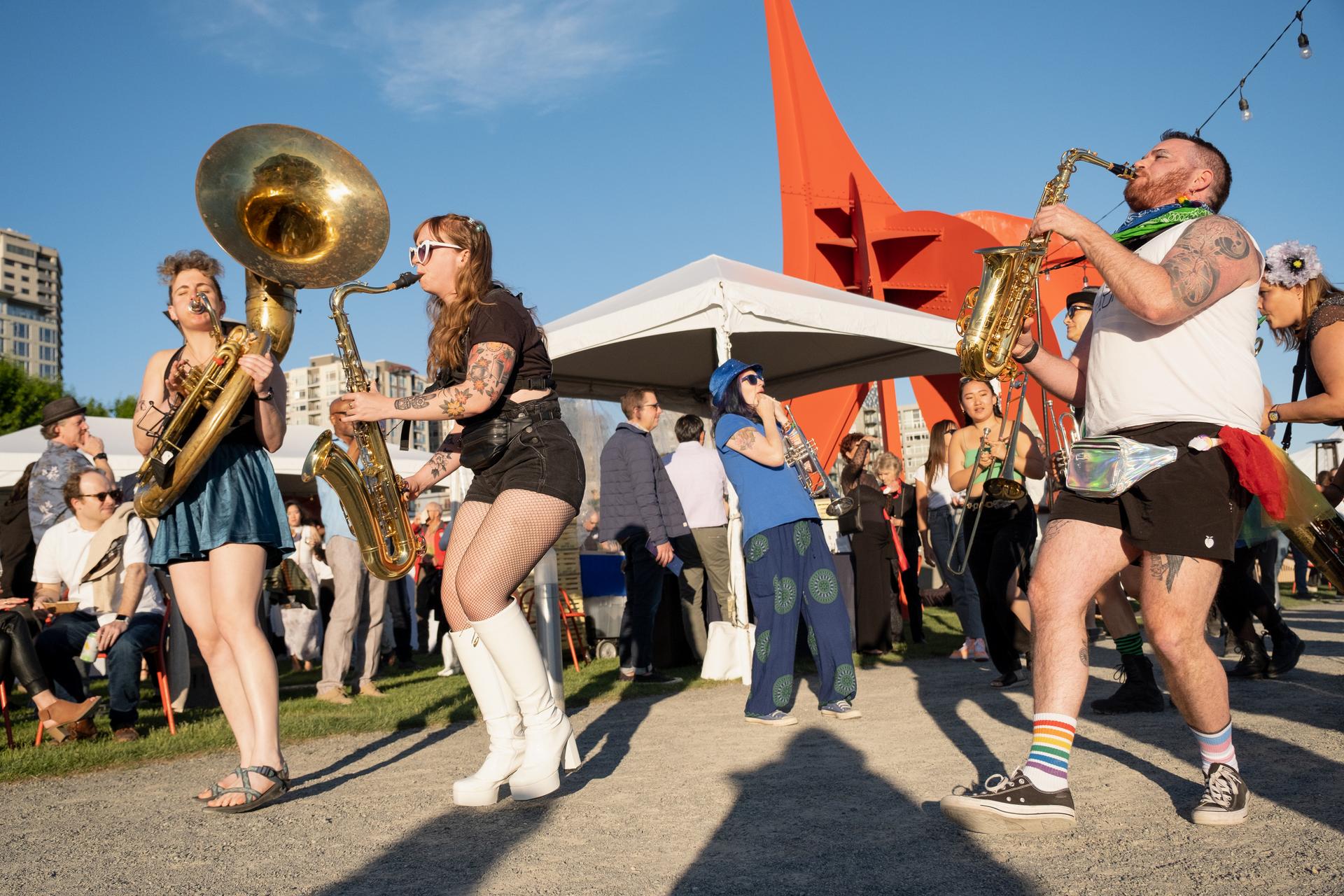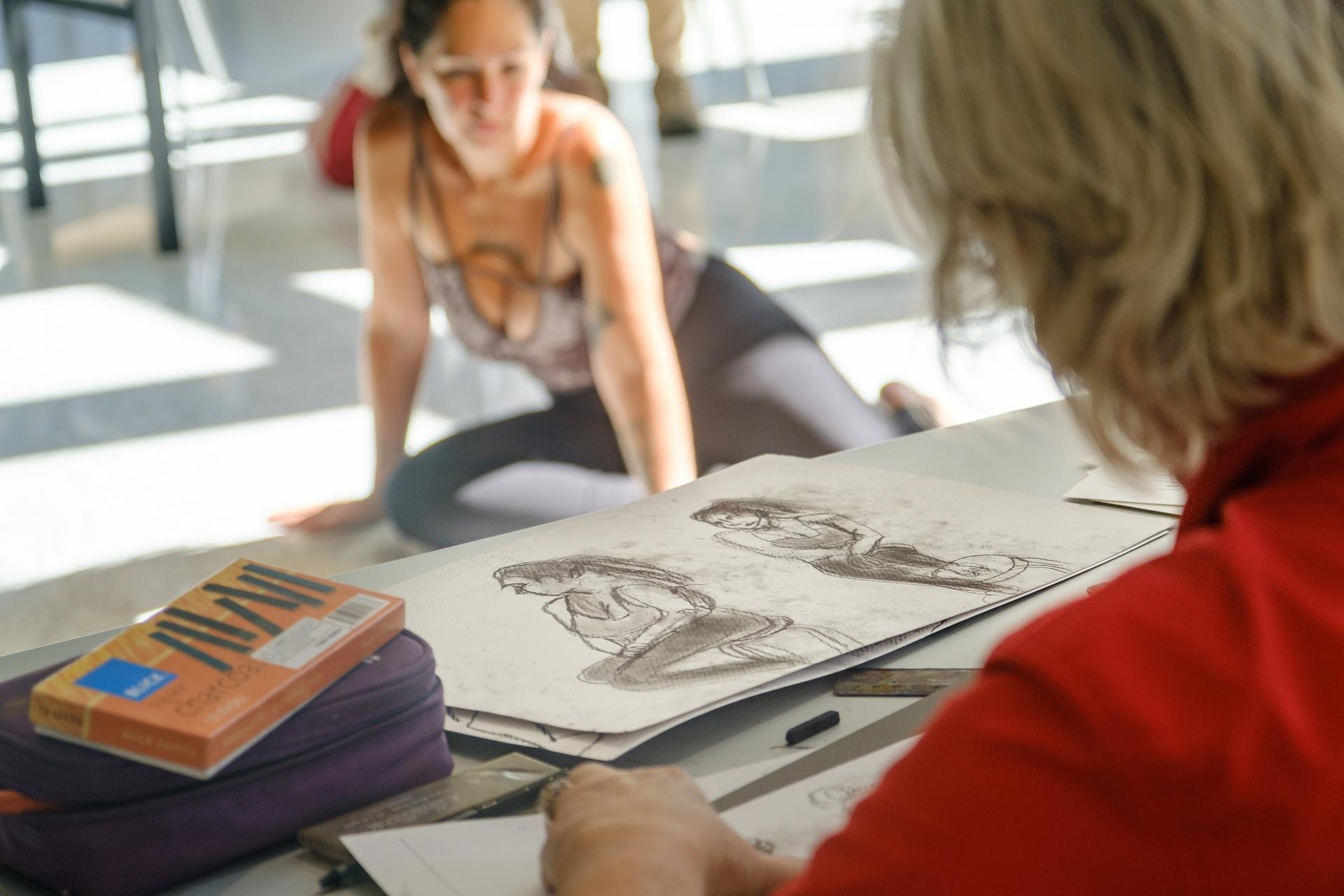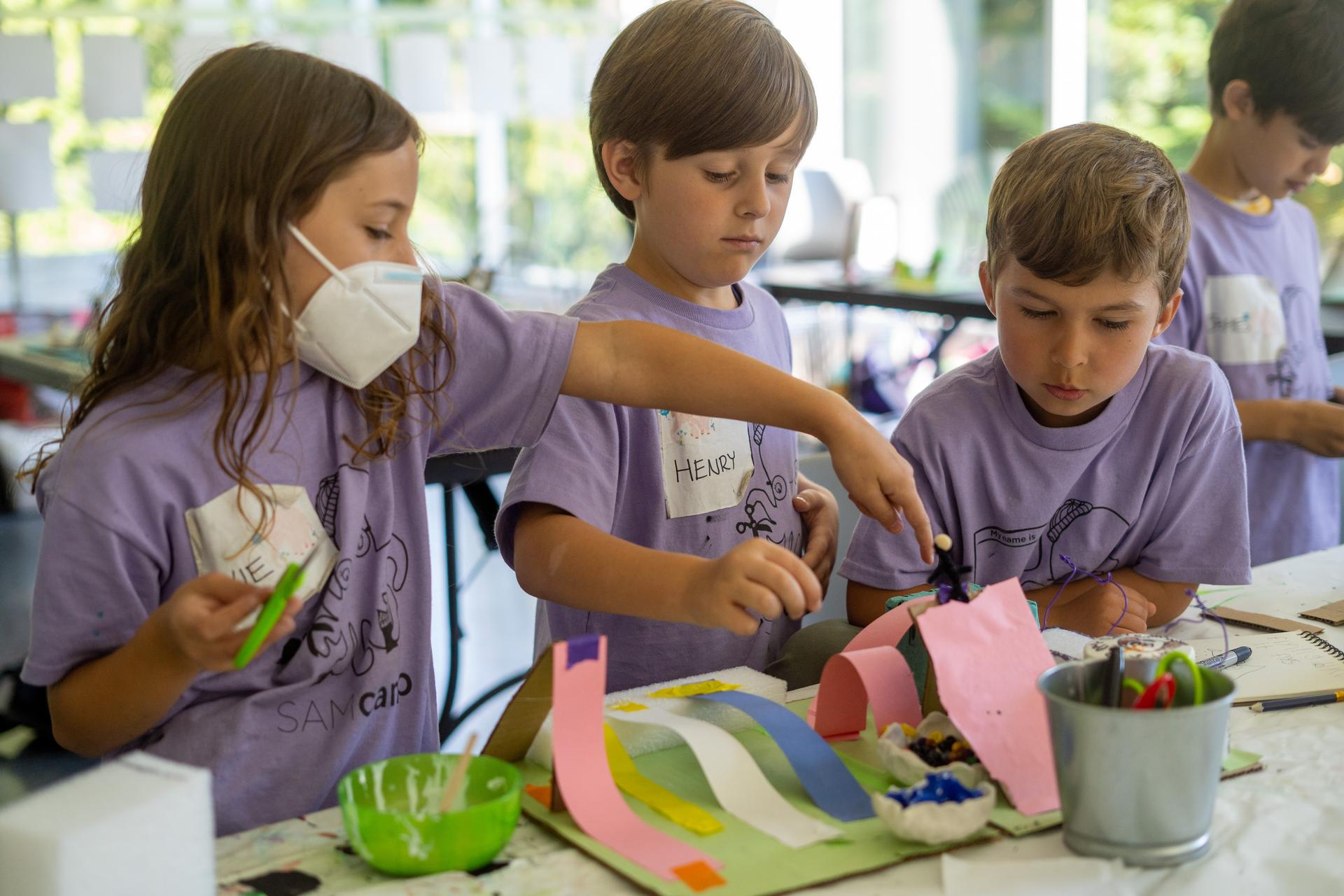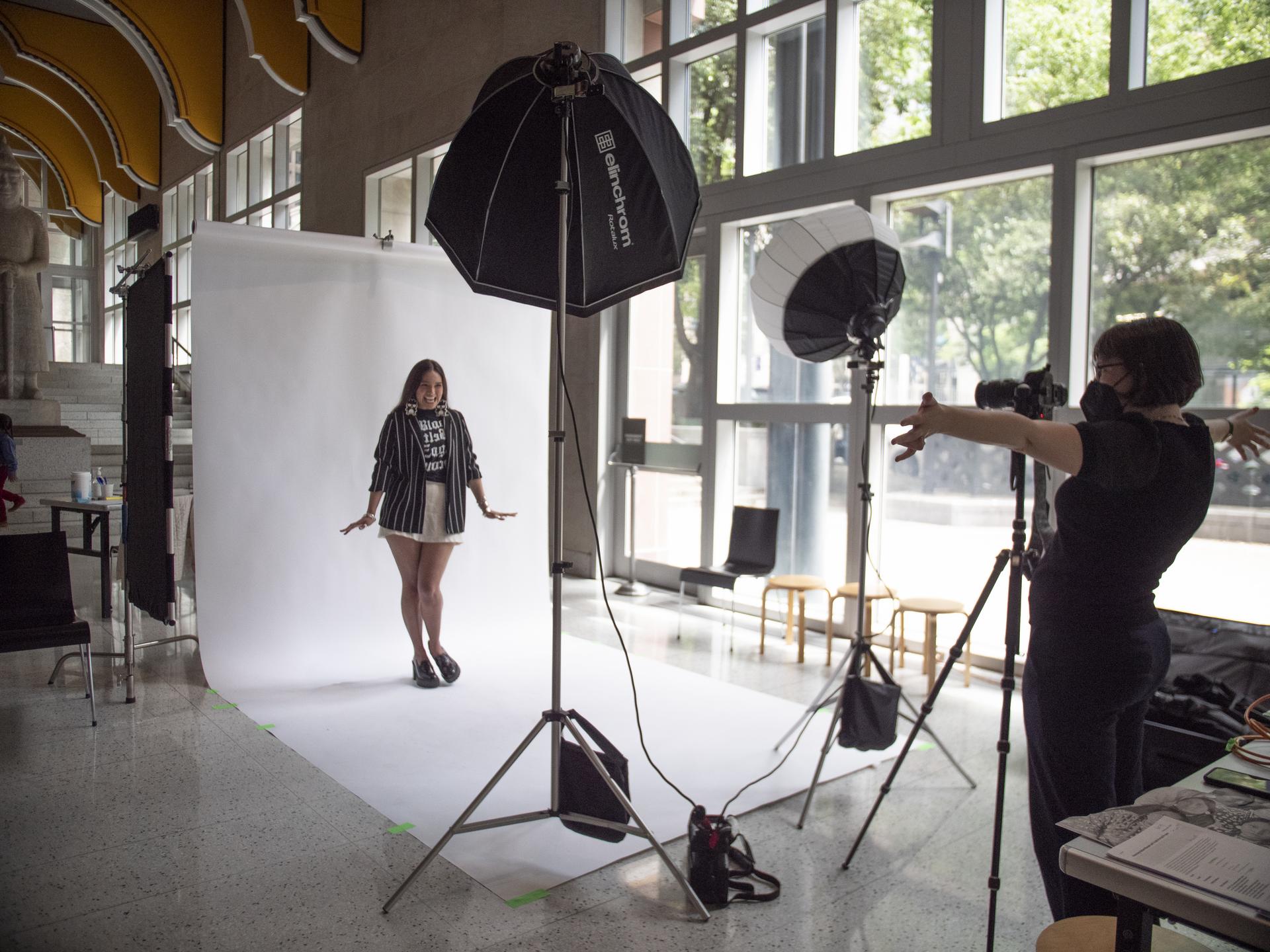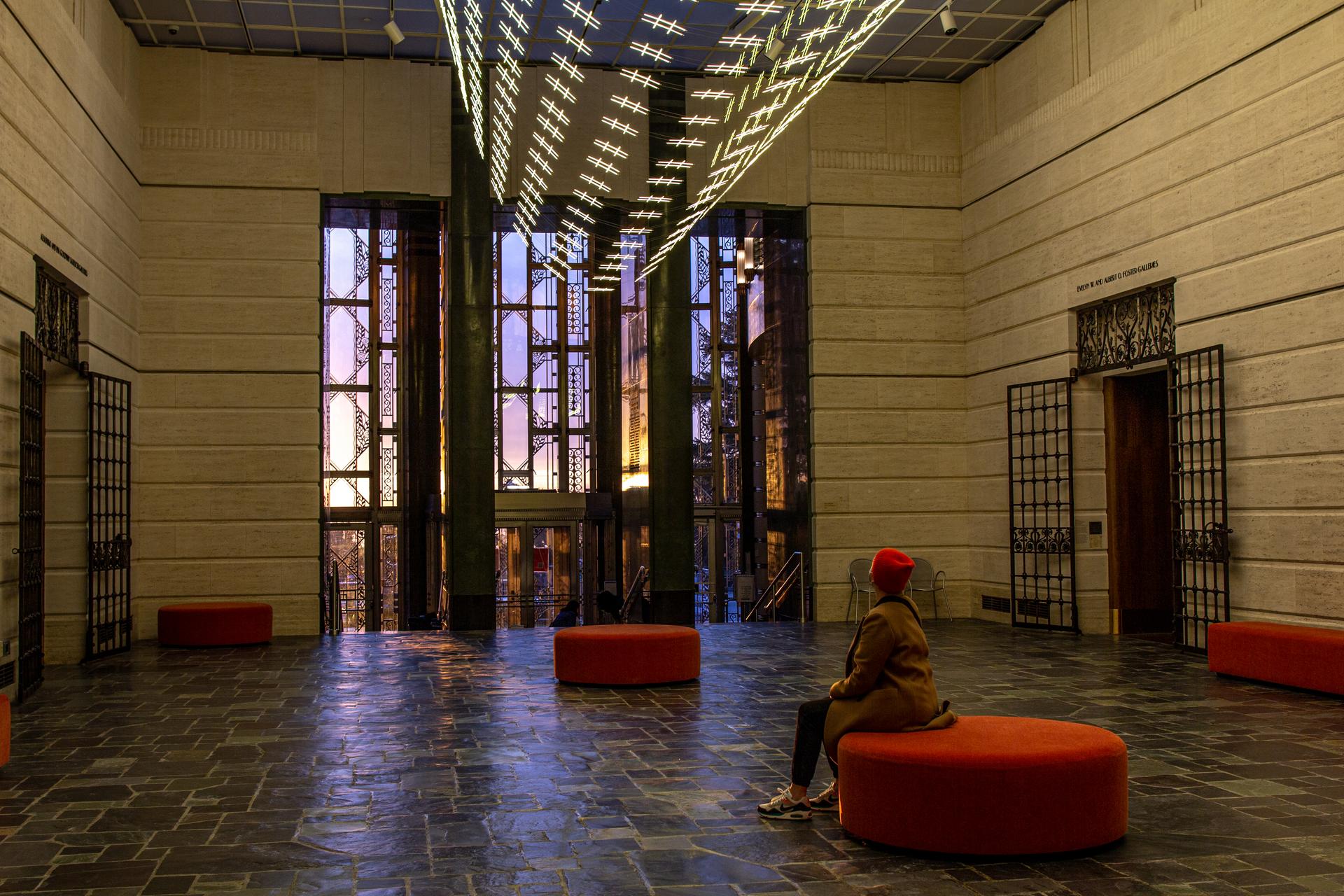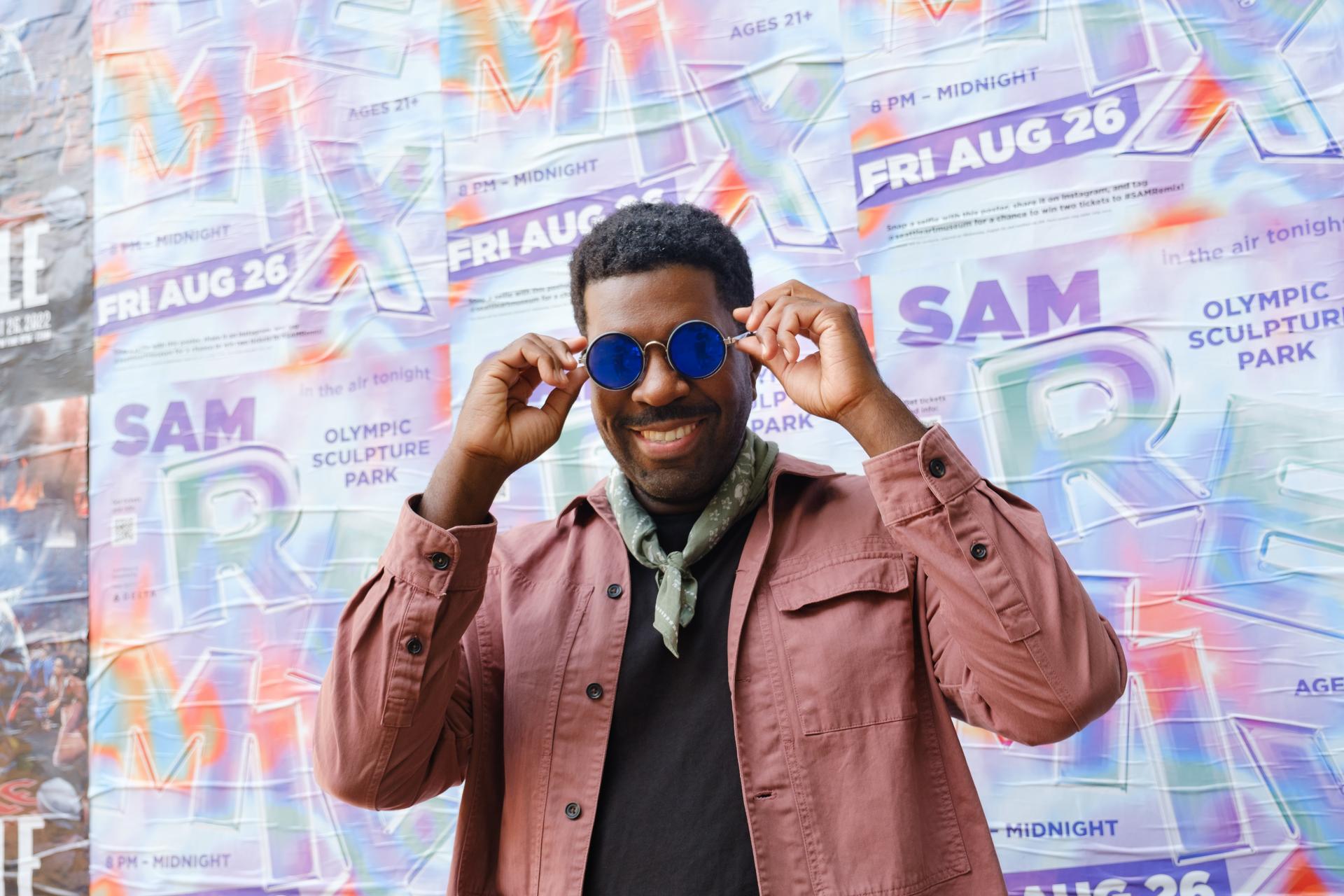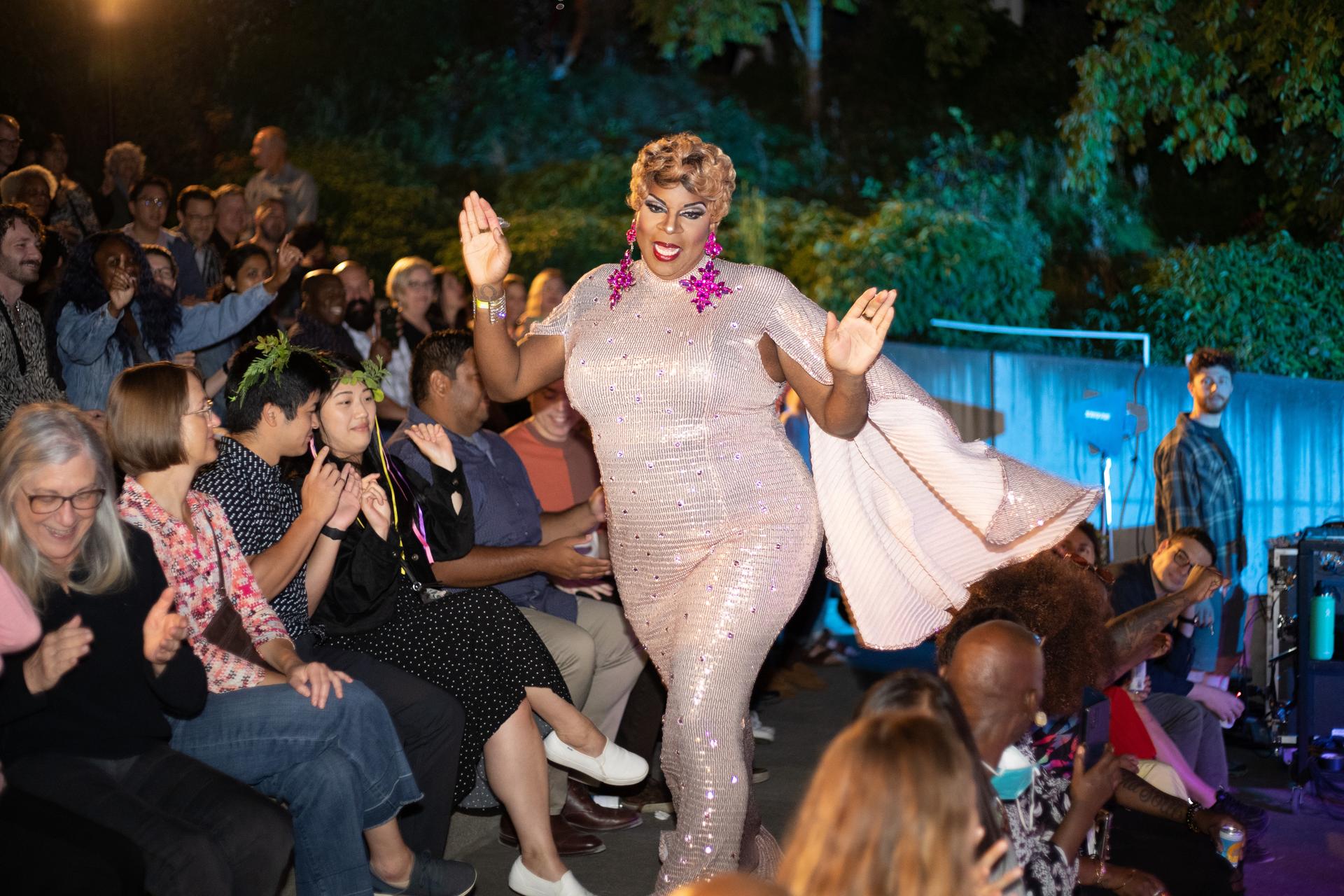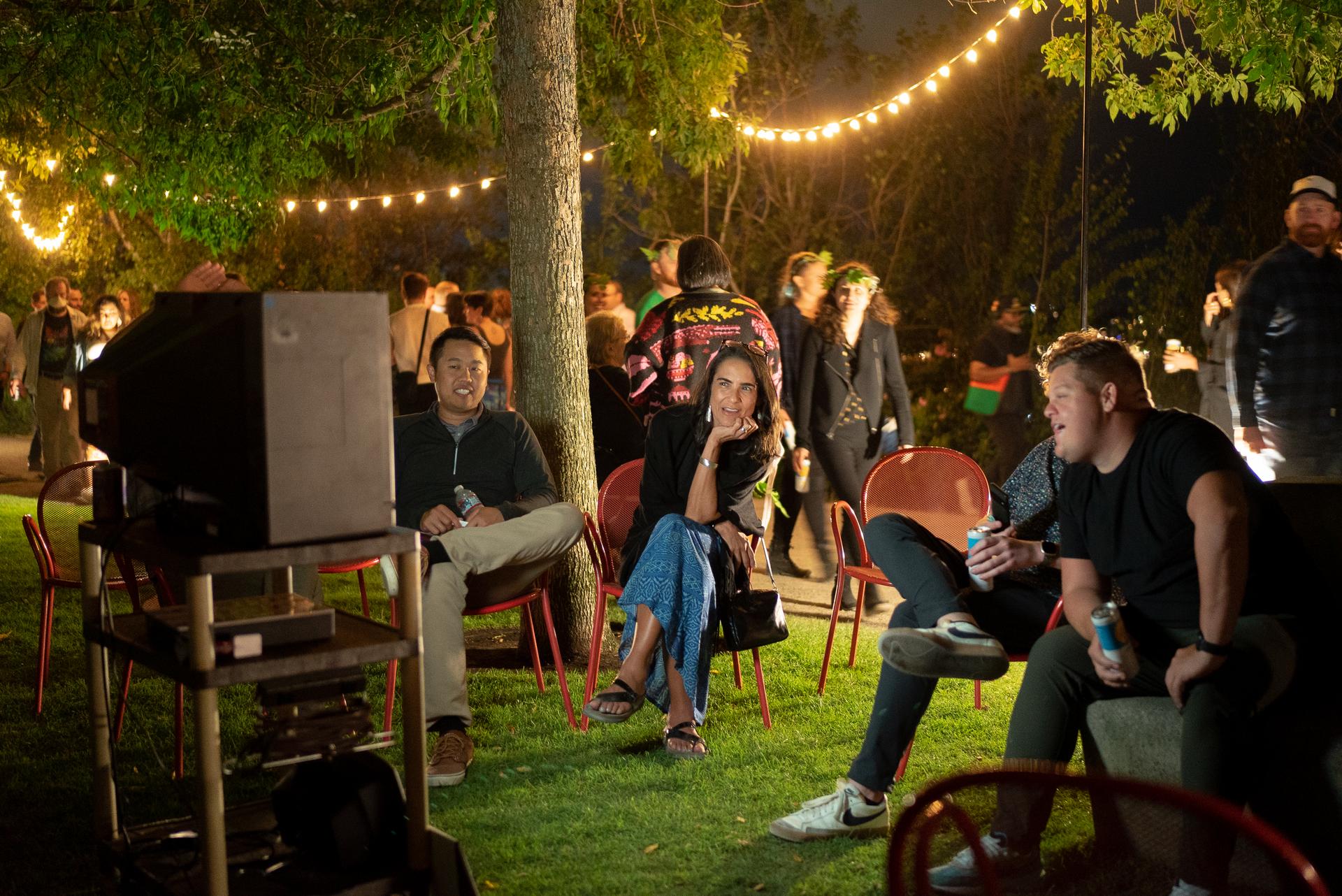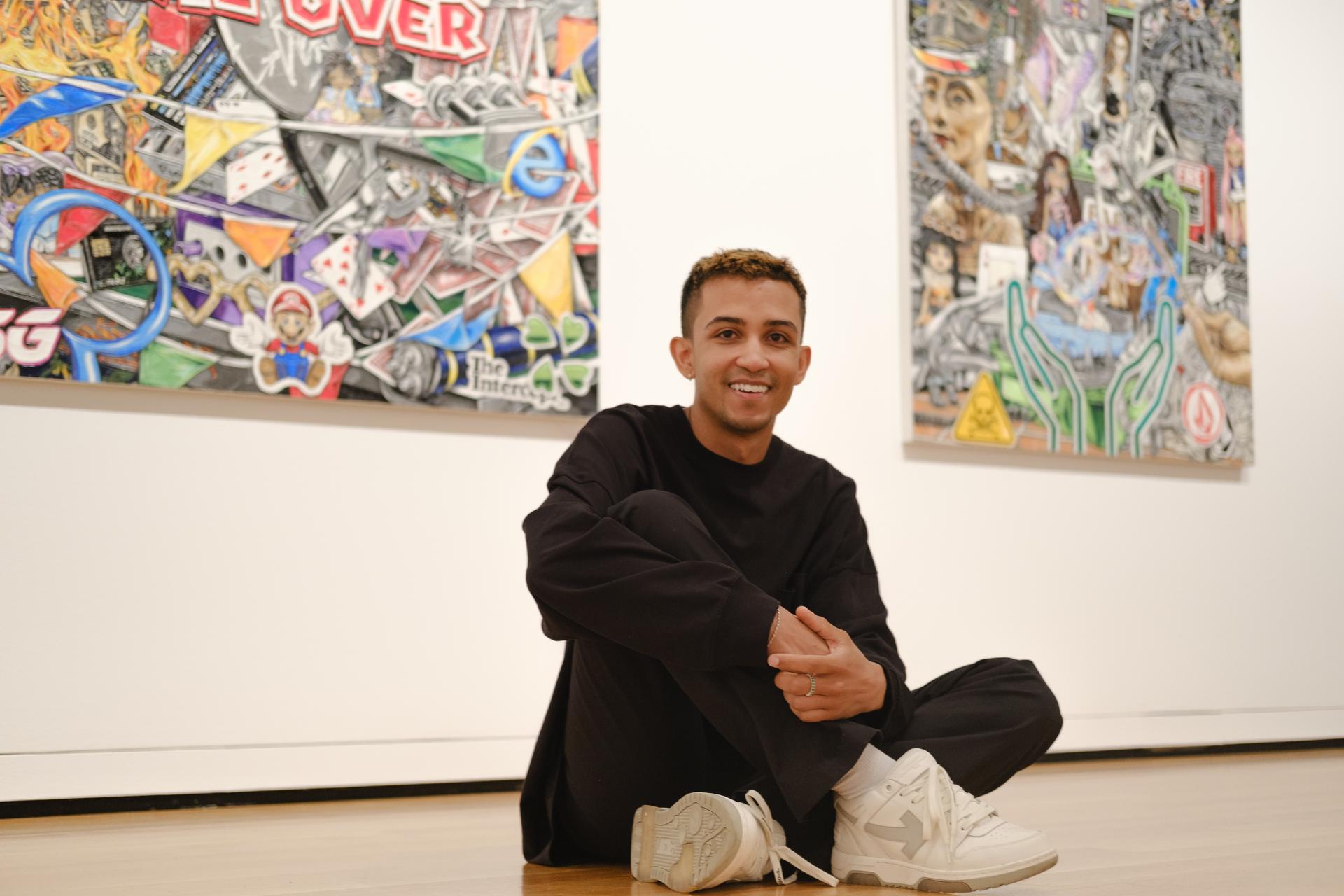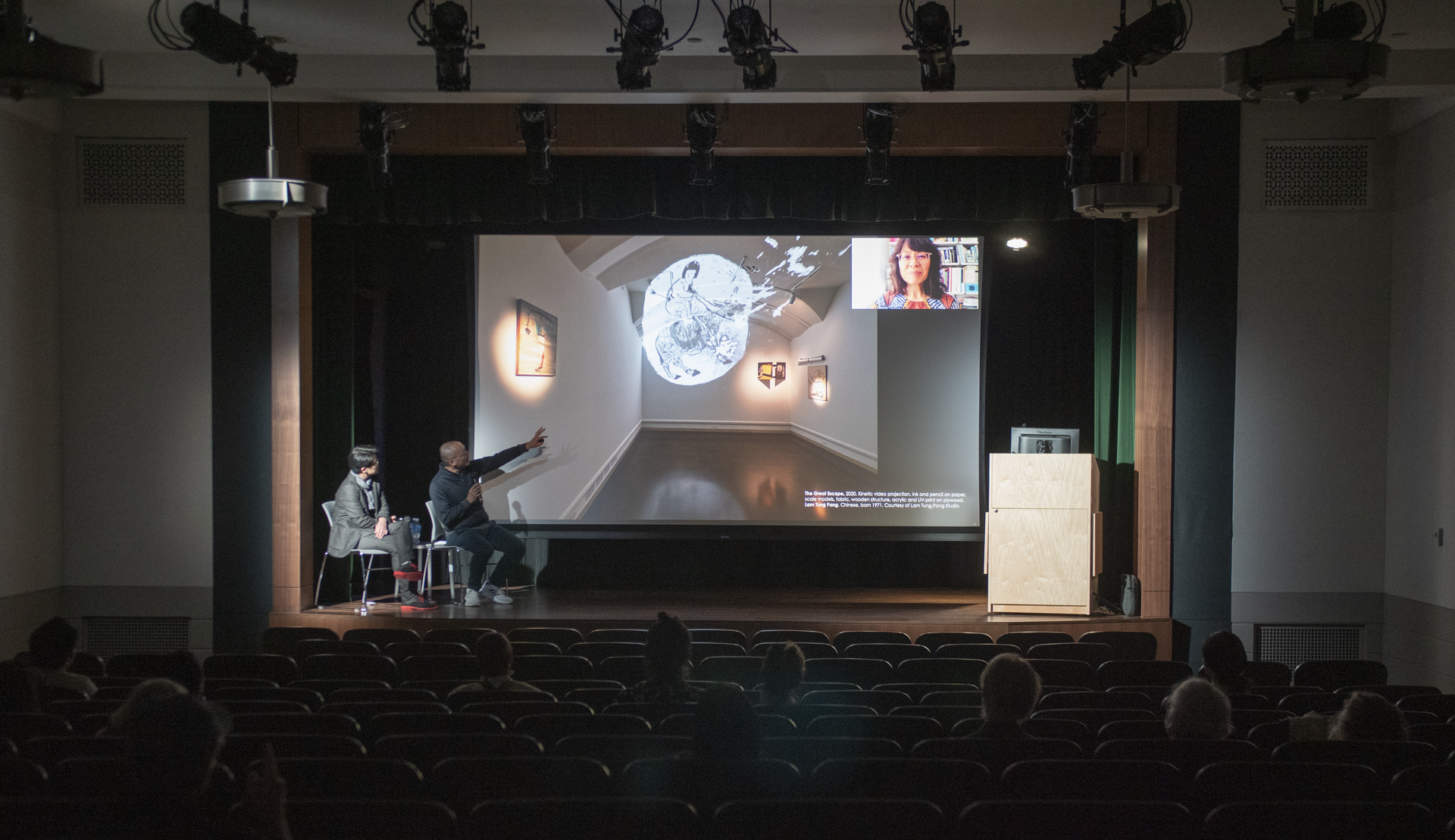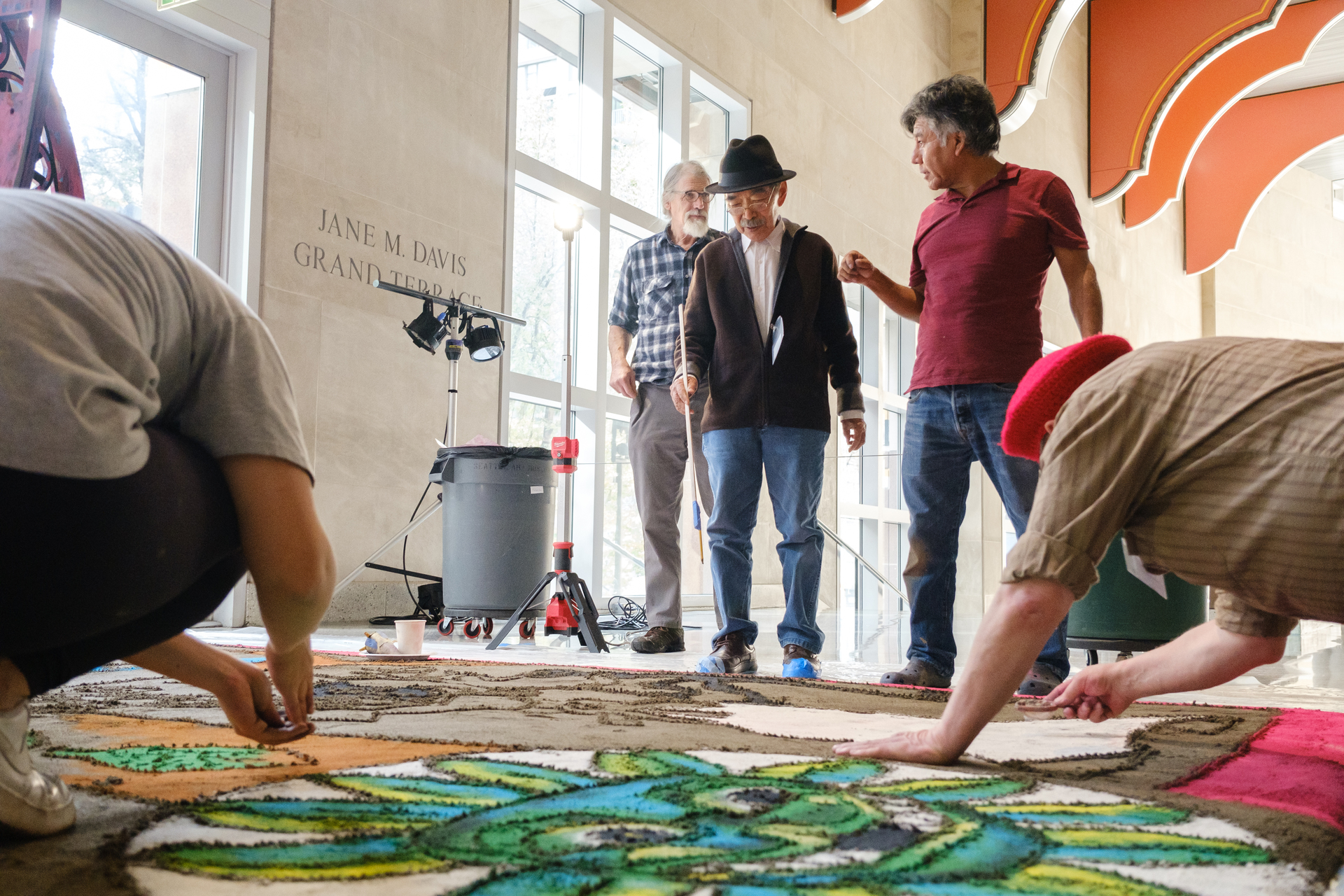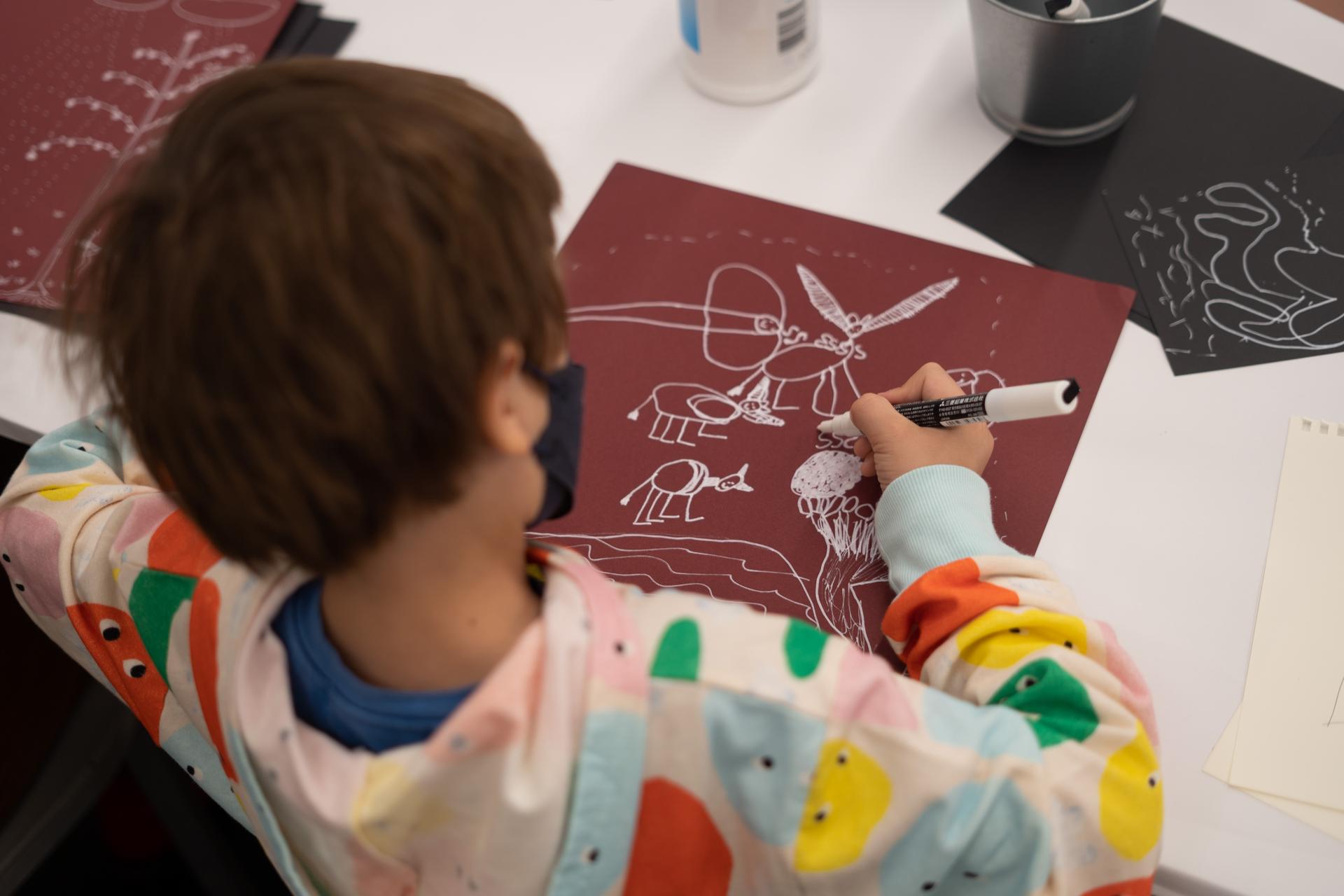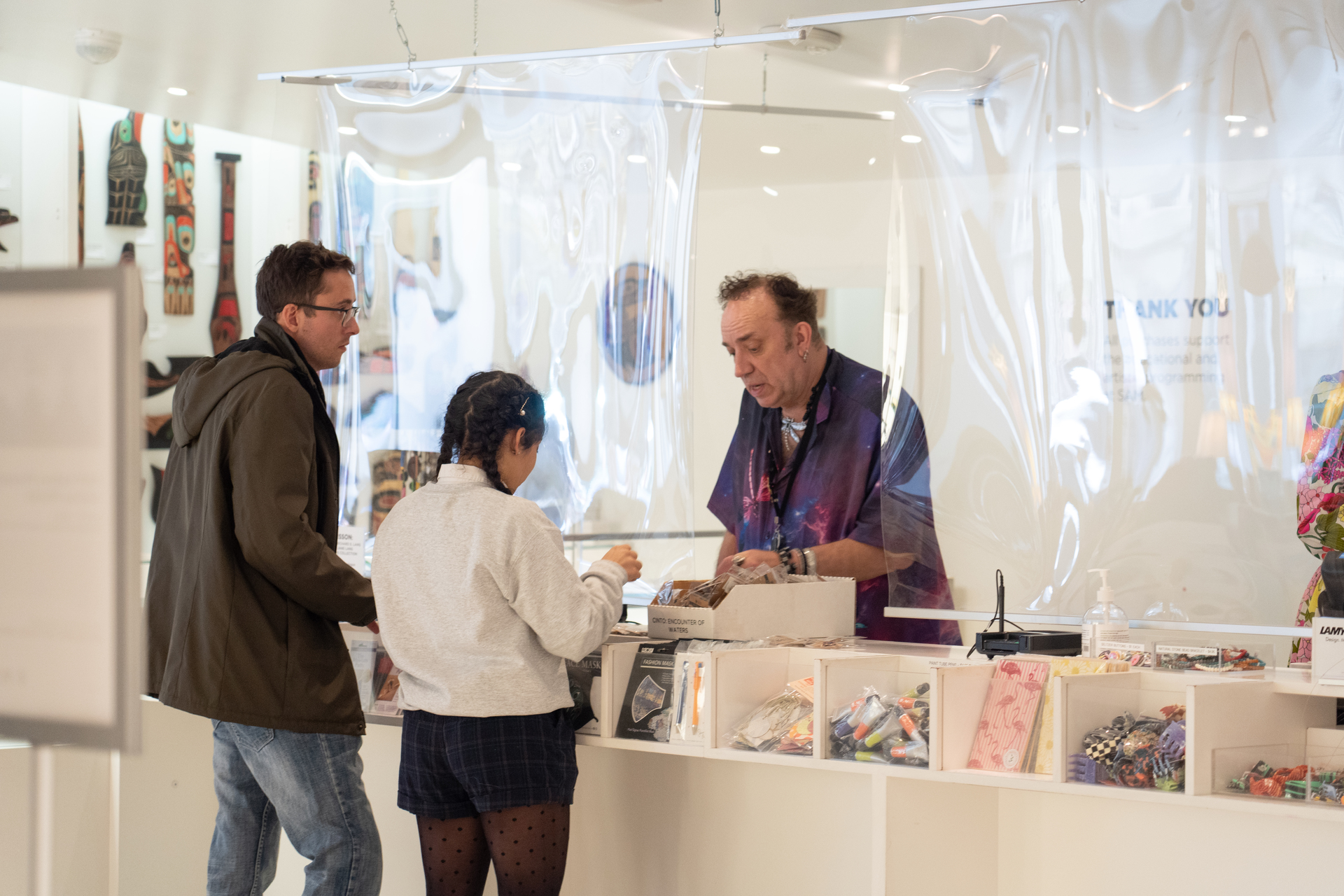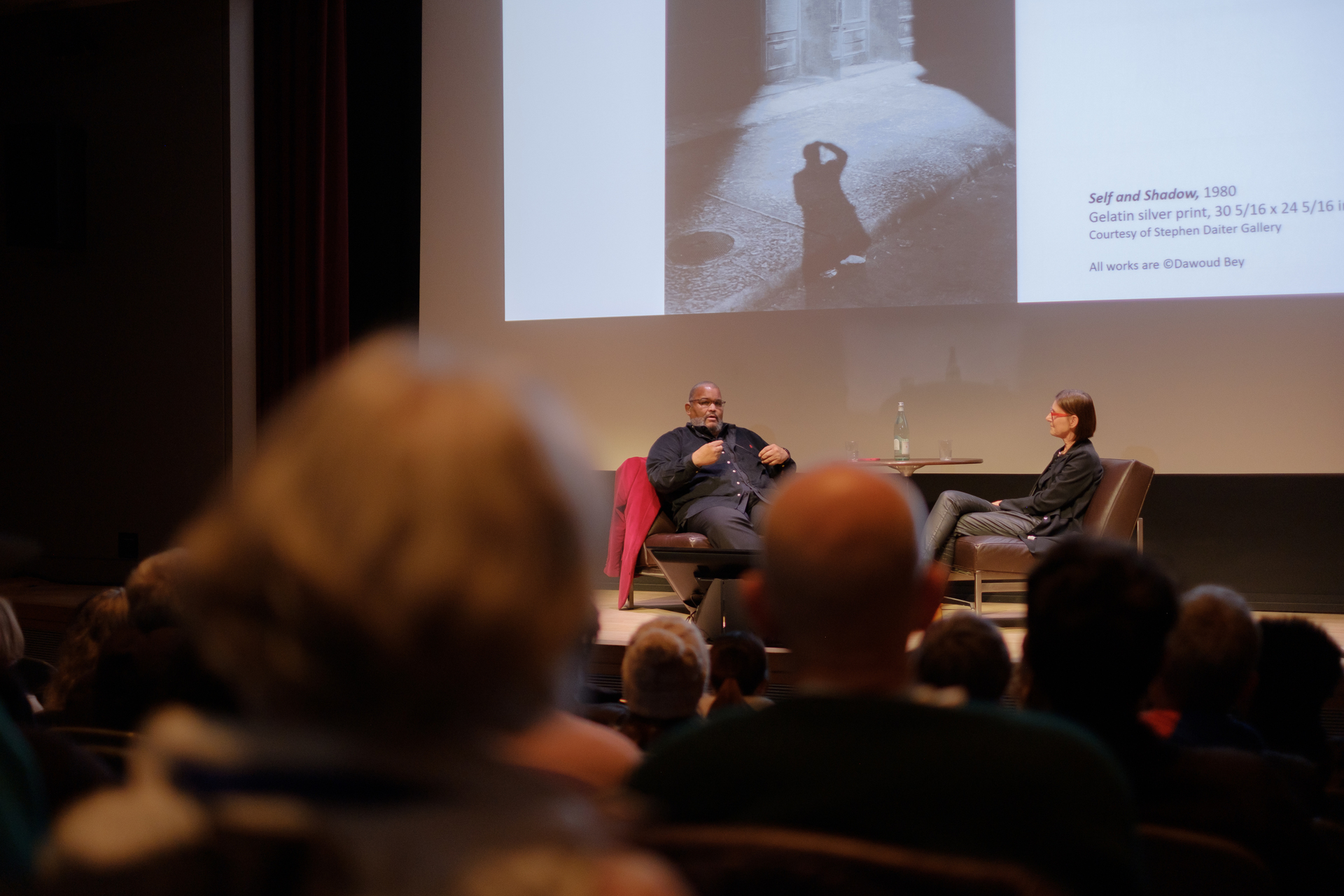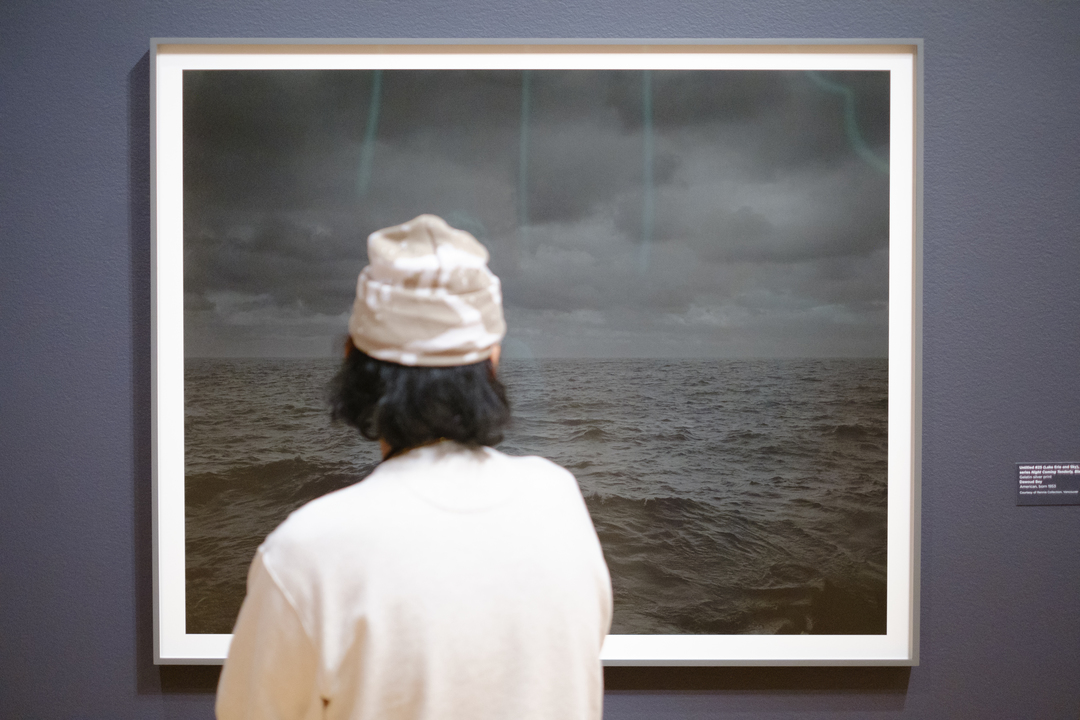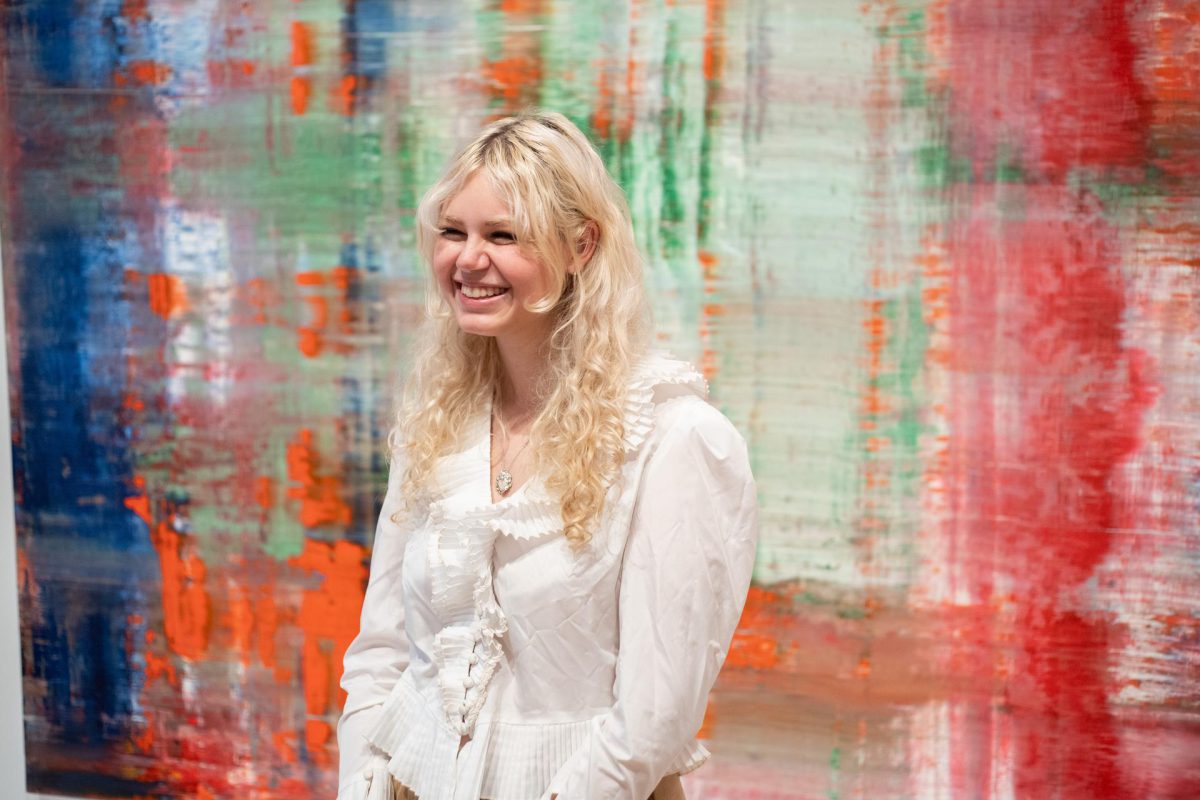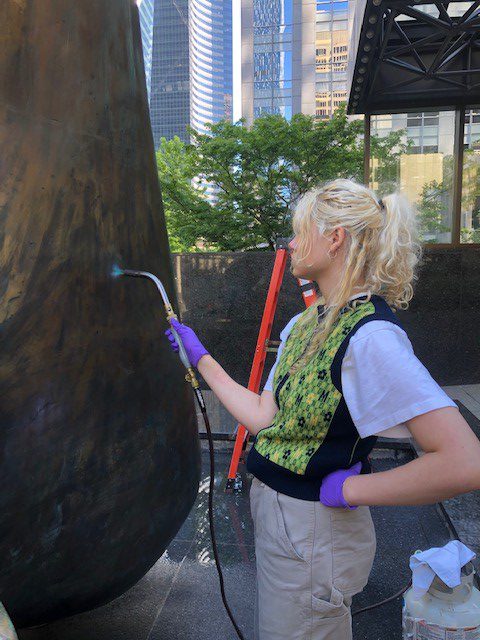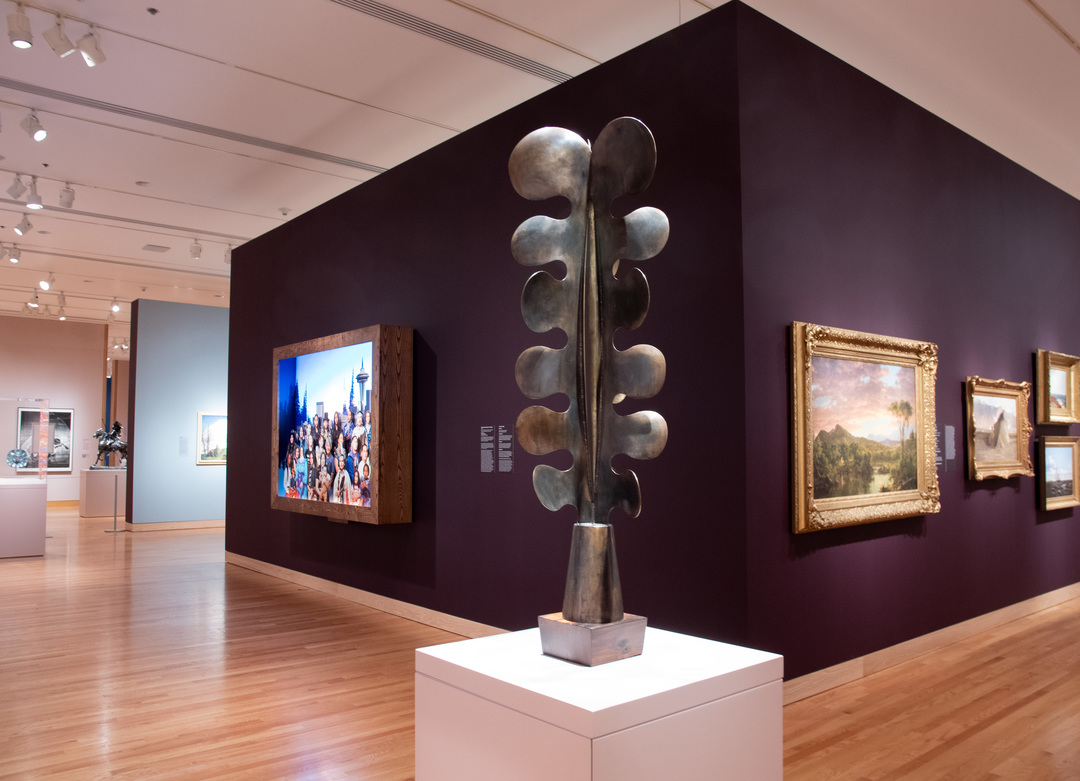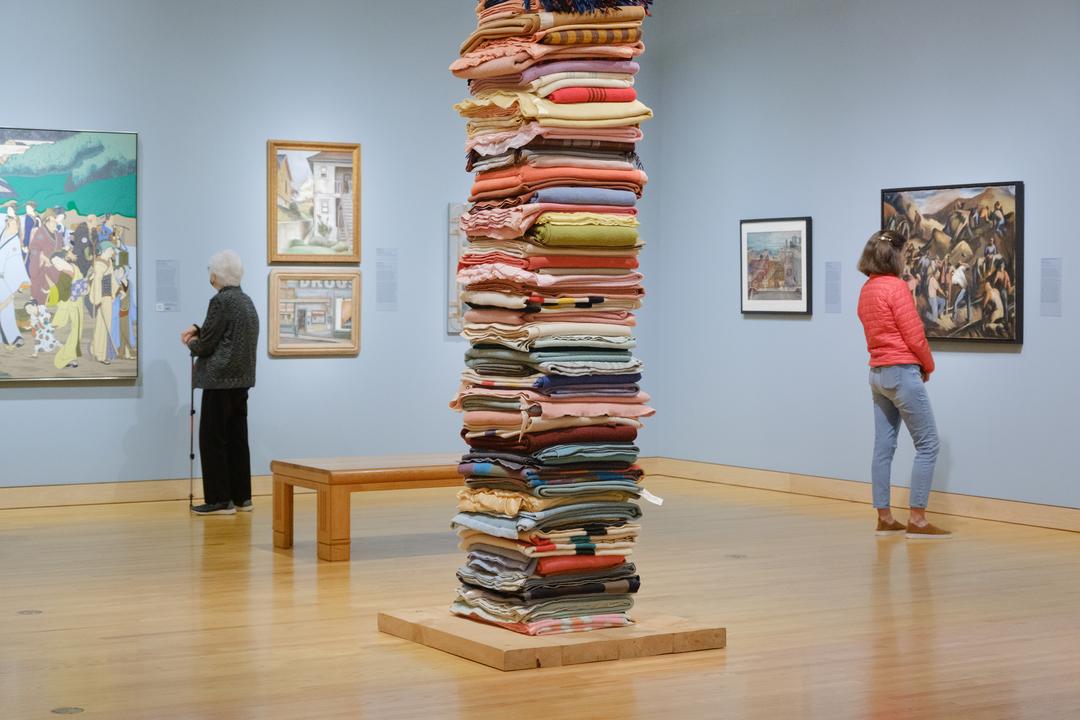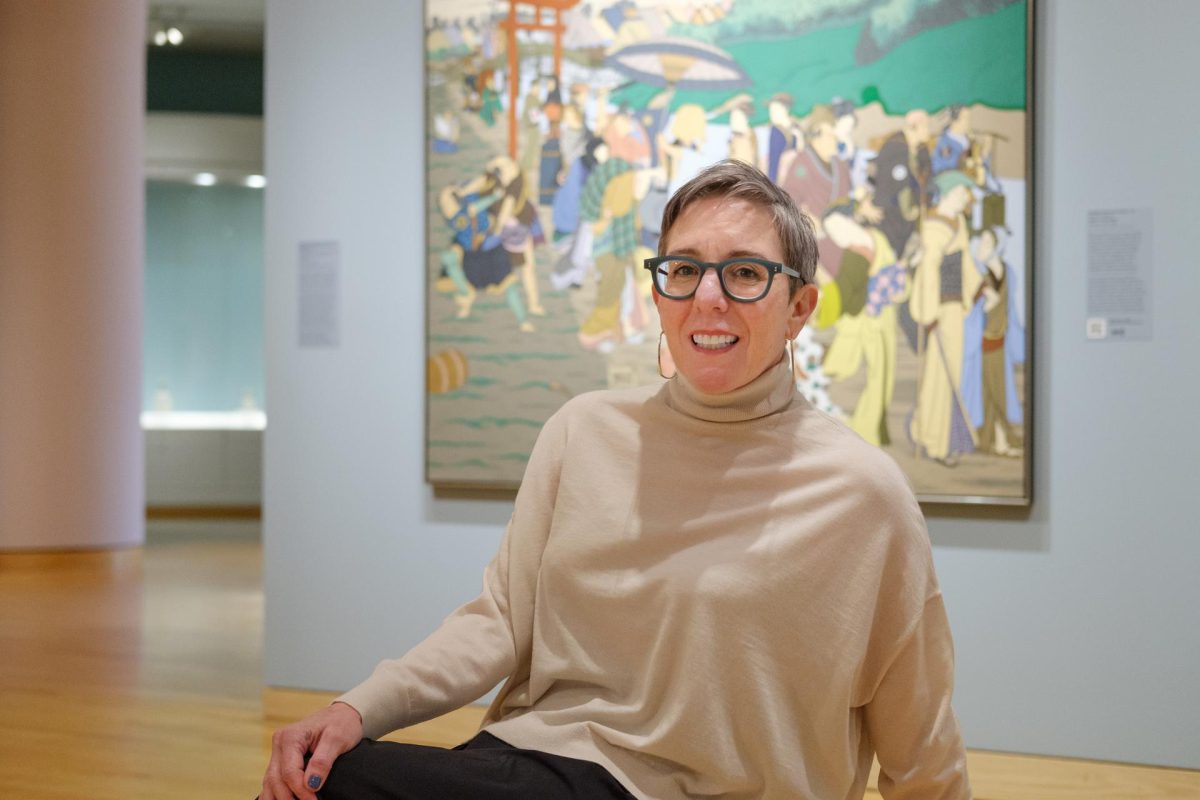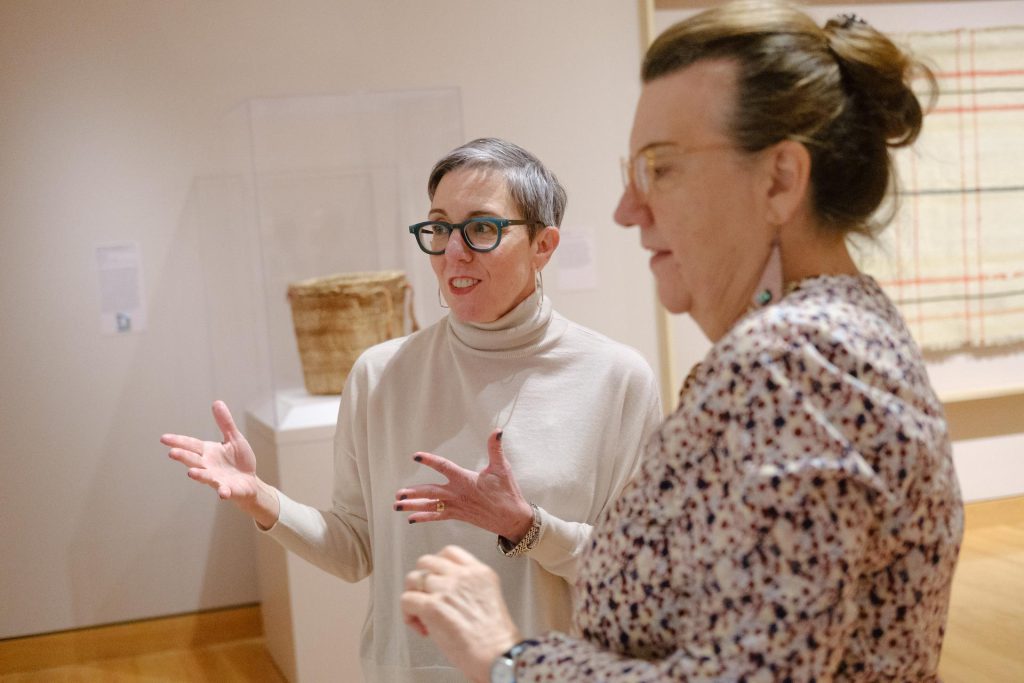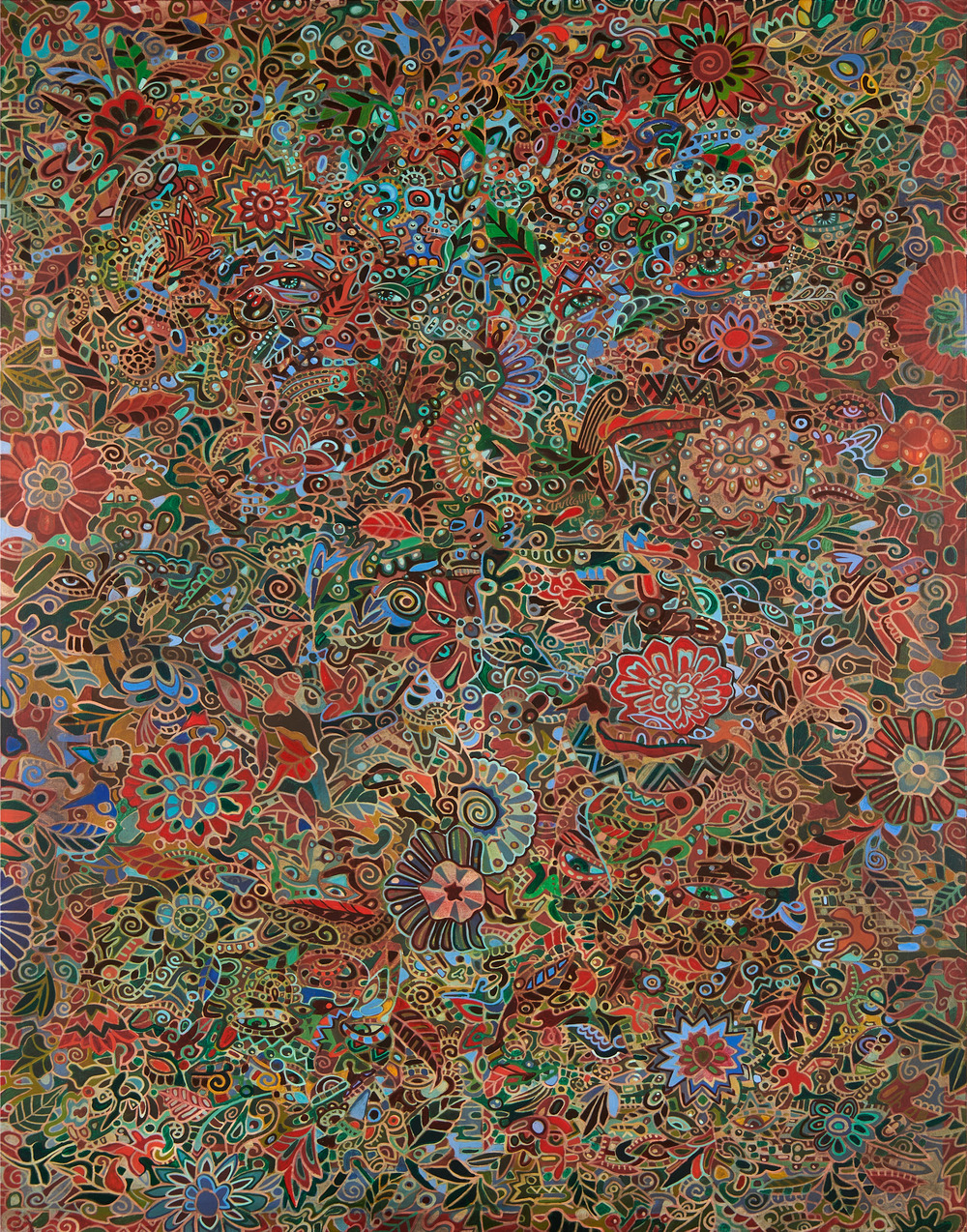Translating the Untranslatable: Emerging Arts Leader Amelia Ossorio Reflects
National Hispanic Heritage Month is celebrated annually between September 15 and October 15 in recognition of the contributions and influence of Hispanic and Latine Americans to the history, culture, and achievements of the United States. In recognition, we’re sharing this essay from a recent Emerging Arts Leader Intern. Learn more about SAM internships.
In memory of Ayşenur Ezgi Eygi, my UW Middle East Studies classmate who was killed by military on September 6, 2024, while volunteering in the West Bank. May we continue to be inspired by her memory to advocate for justice and a free and interconnected world.
Often, when I share that I am taking advanced Farsi classes or talk about my dedication to Persian-English poetry translation projects, I am met with confused stares. I’m a rising senior at the University of Washington majoring in Middle East Studies, with a concentration in Persian and minoring in Art History. With the mentorship of my professor, Dr. Aria Fani, I am inspired to disprove the myth of “untranslatability”: that art, languages, cultures, and people are irreconcilable and at odds with each other. This was a perspective I wanted to bring to my Emerging Arts Leader Internship in Public Relations and Outreach at the Seattle Art Museum this past spring and summer. Over the course of 20 weeks, I worked closely with Rachel Eggers, SAM’s Associate Director of Public Relations, on efforts to invite local Seattle communities into the museum for the summer exhibition, Poke in the Eye: Art of the West Coast Counterculture.
During my time as an EAL intern, I focused on researching and executing an outreach plan with local contacts and partners, and I gathered insight into cultivating community partnerships between the museum and the public. Towards the end of my internship, my focus shifted to synthesizing my data into a report that can support the museum’s future outreach strategies. As a freelance artist with a following of nearly 60,000 on Instagram and more than 10 million views on my original comics, illustrations, and animations, I am keenly aware of the power of social media as a tool for connecting art with the public, and I wanted to bring this knowledge and creativity to support SAM’s outreach efforts.
Much of my internship inspired me to reflect on the intersections of the art museum as an institution and how it connects to our dynamic lives, passions, and experiences. In addition to my educational experiences, I volunteer with Peyvand Non-Profit Organization, which serves youth arts and cultural programming for Seattle’s Iranian and Afghan families. For the past two years, on behalf of Peyvand, I have designed educational posters about the Persian New Year to be displayed in several King County Library System locations. Peyvand director Shahrzad Shams has been a mentor to me as I develop as an artist and advocate, and my work with the organization has contributed to my understanding of partnership work.
SAM invites all EAL interns to create a gallery tour or presentation to share their contributions to the museum with the public. For my gallery tour, I drew inspiration from a personal connection to artwork on view in the museum. I highlighted two contemporary Mexican artists in SAM’s collection, Diego Rivera and Alfredo Arreguín, and presented a gallery tour on the public outreach plan I created inspired by the artists’ works. I was also inspired by my grandfather, Abel García Ossorio, who was the first Mexican American in the US to earn a PhD in clinical psychology after being rejected from colleges for being Hispanic. Using my time at the institution and access to its artworks by Rivera—two of which are on view in American Art: The Stories We Carry—encouraged me to learn more about the Mexican muralist movement and the hectic period following the Mexican Revolution, as I better my understanding of the history and political and social instability that led to members of my family immigrating to the US from northern Mexico in the 1920s.
As an artist, I often prefer expressing myself and experiences visually through illustrations and comics. So to accompany my reflection, I also completed an illustration inspired by one of the works from my SAM gallery tour, Stalemate (1973) by Alfredo Arreguín (b. Michoacán, Mexico, 1935–2023), a Seattle-based artist who unfortunately passed away last year. The oil painting blends Pacific Northwest flora and fauna with other symbols and familiar images from Arreguín’s upbringing in Michoacán and Mexico City. A new work in SAM’s collection, the painting was on view in Poke in the Eye this summer.
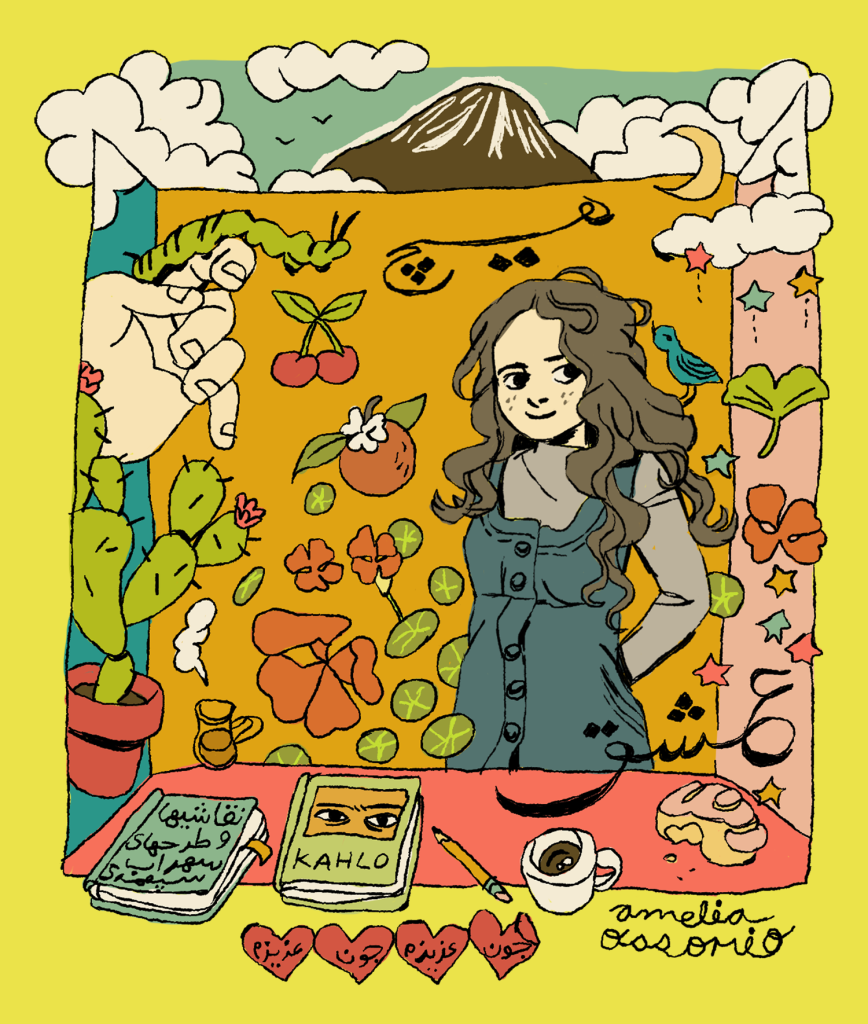
I am drawn to the memory-like, stream-of-consciousness quality to the original painting, and I decided to create my own illustrated interpretation with symbols from my experiences and learnings at SAM this spring and summer. During my SAM internship, I visited Mexico City, which influenced my gallery tour. I represented this with a concha, an iconic Mexican sweet bread pastry; a cafecito; and a book on Frida Kahlo, who had also been a muse for Arreguín throughout his career. My Persian and Iranian studies at the University of Washington also guided me during my internship, and I illustrated a book that my language professor Dr. Fani had lent me for the quarter: Paintings and Designs of Sohrab Sepehri. I paid visual homage to the original painting by incorporating drawings of flowers, fruit, stars, and a mountain, but added my own flair: the flowers in my piece are nasturtiums, my mother’s favorites, and cherries represent the summer fruit of the orchard in my extended family. The mountain, originally a landmark of Mt. Rainier, painted by Arreguín, in my version became inspired by the illustration of a mountain on the cardboard box of Alvand on my tea shelf, named after a mountain range in western Iran, which is also a brand of sugar cubes to mix in hot chai and coffee called qand in Farsi. The cactus entering on the left represents both my heritage connection to Mexico and my online handle (@sensitive.cactus). Instead of flowing branches, I instead wrote in Persian calligraphy two words that are very meaningful to me and frequently appear in poetry: عشق “eshq” (love) and هیچ “heech” (nothing). While the original painting incorporates images of butterflies, which to me represent completion and fulfillment, I opted to draw a caterpillar, representing personal growth and embracing the in-between process.
I would like to thank my friends, family, and SAM staff for their support along the way, which was pivotal to my experience. I am appreciative of SAM staff who made me feel welcomed into the new environment and offered advice and understanding.
– Amelia Ossorio, Emerging Arts Leader Intern in Public Relations and Outreach
Photo: L.Fried. Illustation: Amelia Ossorio.
